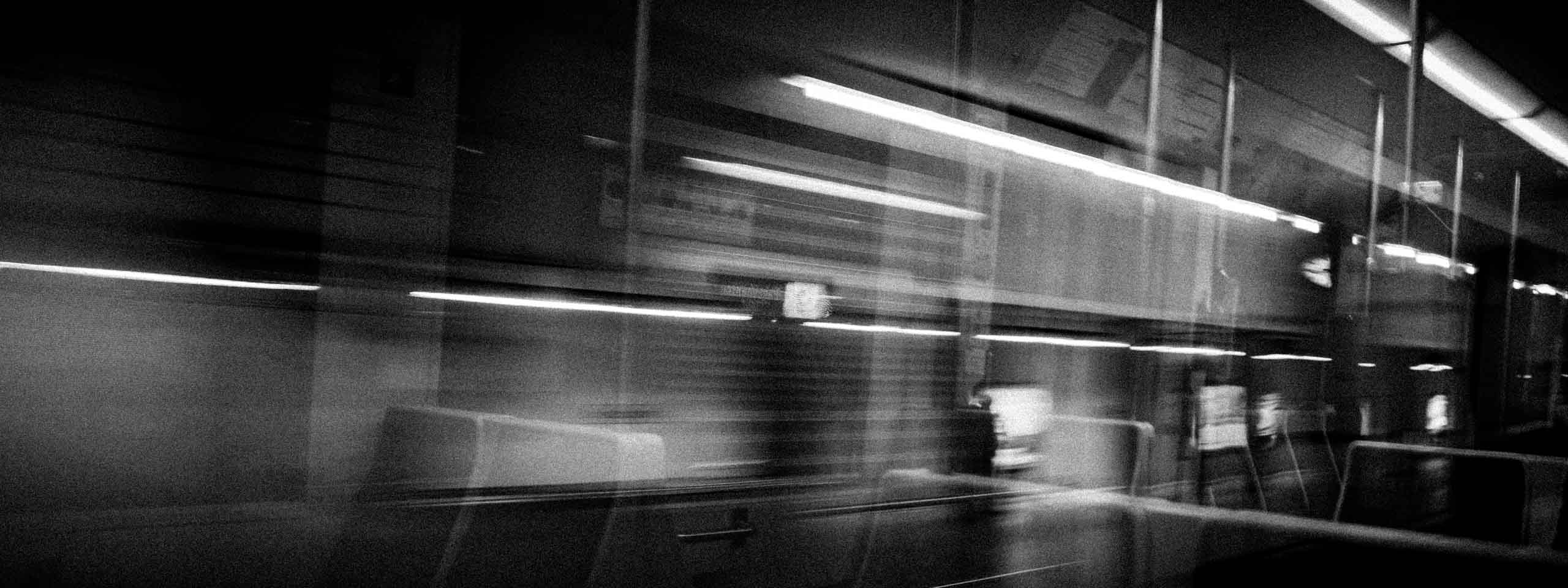09/19/2021
Slowly, life in the city returns to normal. Due to the COVID-19 pandemic, much of public life has been down for the last year and a half. Also the 'Nachtansichten' (Night Views), which normally take place every year in April. On Saturday, 18 September 2021, it was finally time again.
During the 'Nachtansichten', many buildings in Bielefeld's city center are colourfully illuminated. There are cultural events and the museums and many galleries also join in and are open all night. Here are some impressions.
Nachtansichten 2021 (Night Views) - Kunsthalle
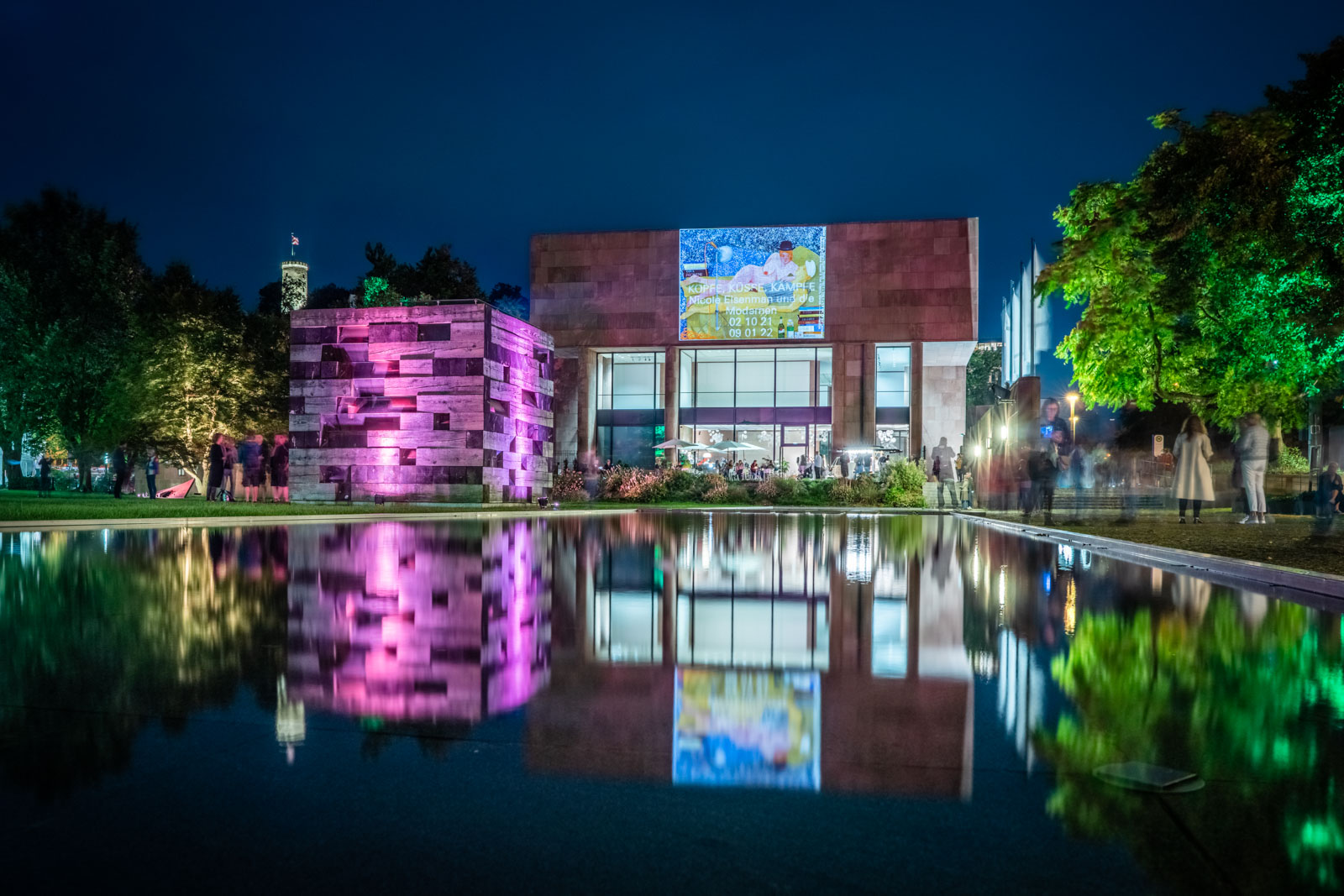
Nachtansichten 2021 (Night Views) - Farmhouse Museum #1
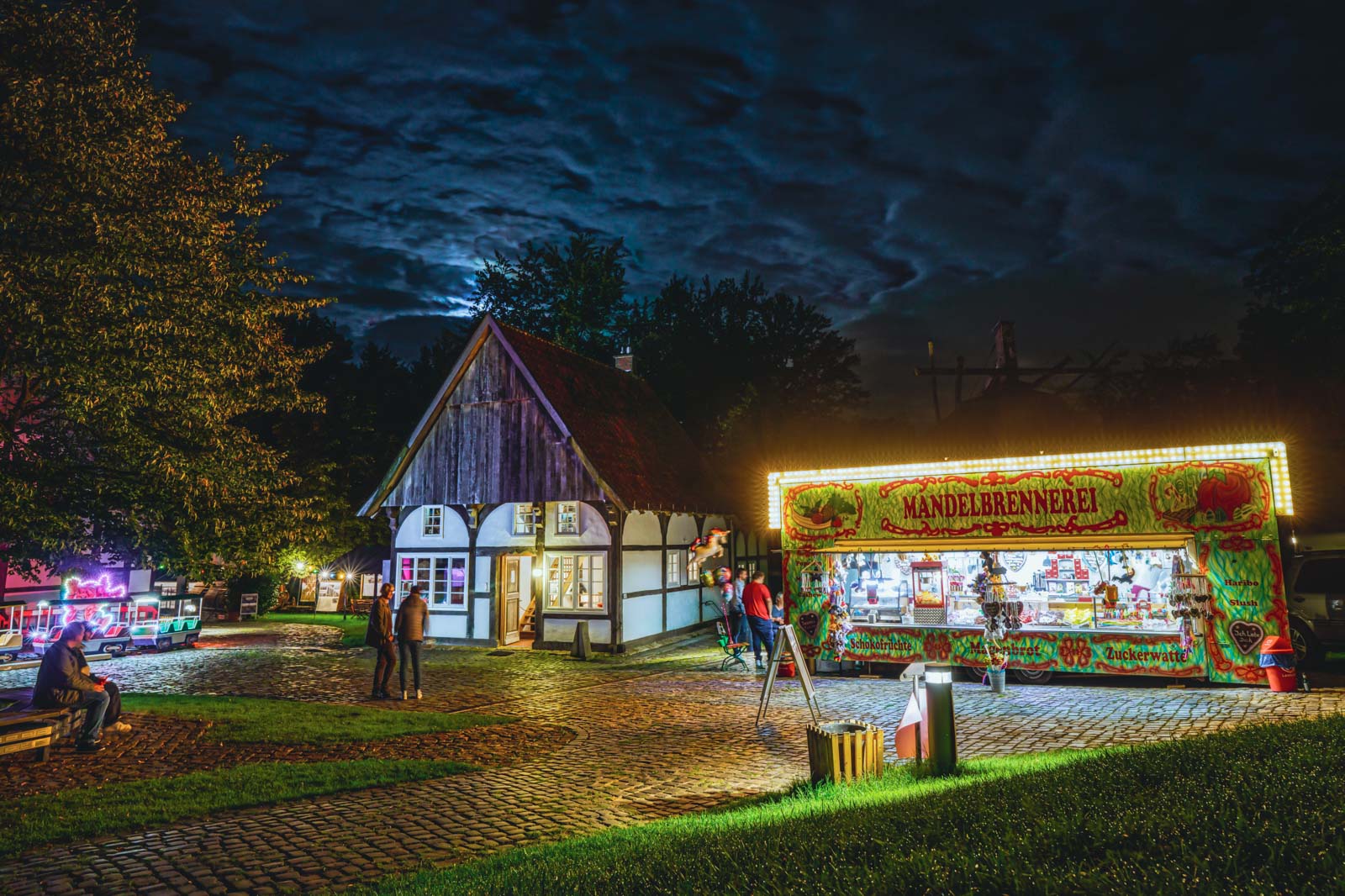
Nachtansichten 2021 (Night Views) - Farmhouse Museum #2
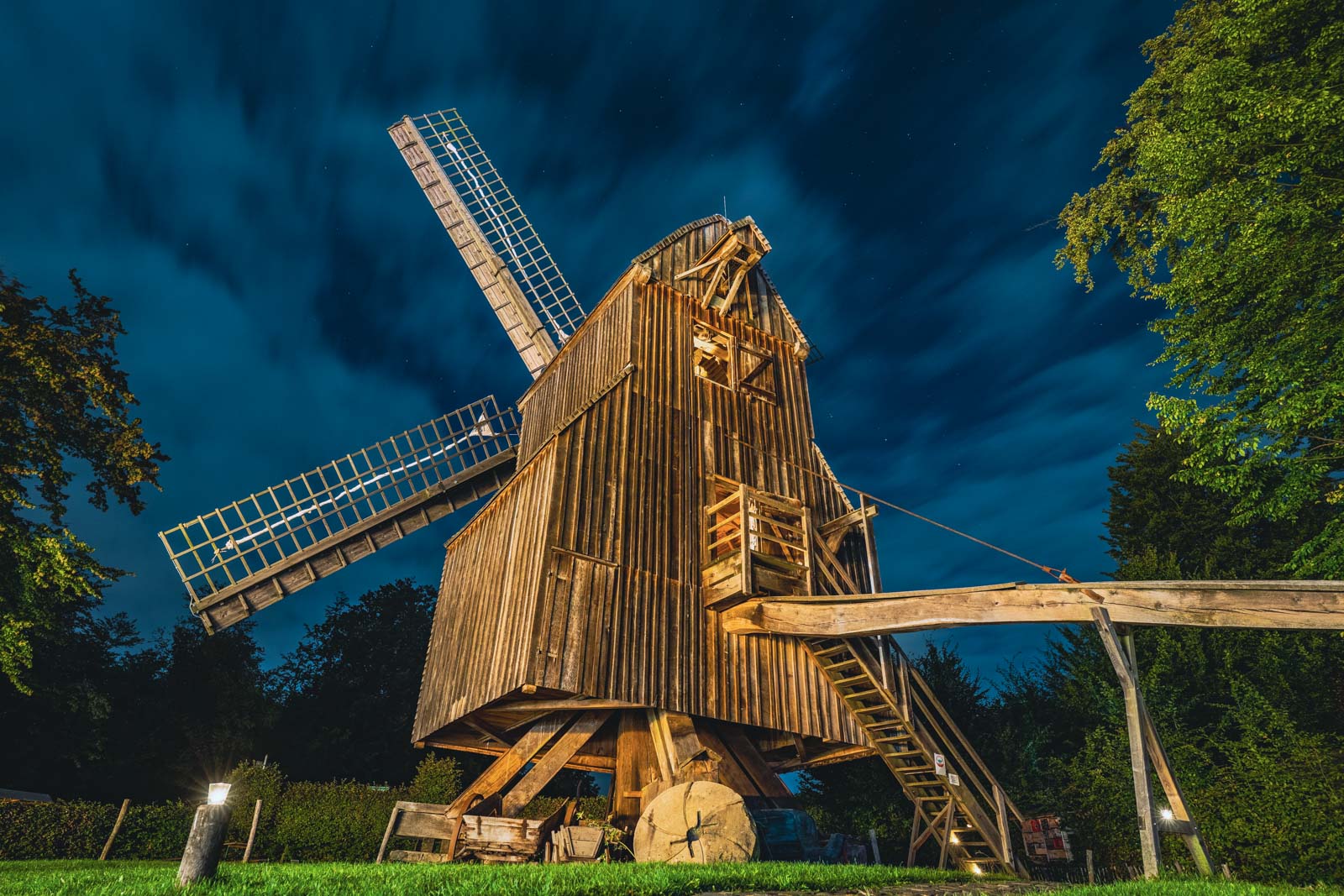
Nachtansichten 2021 (Night Views) - Farmhouse Museum #3
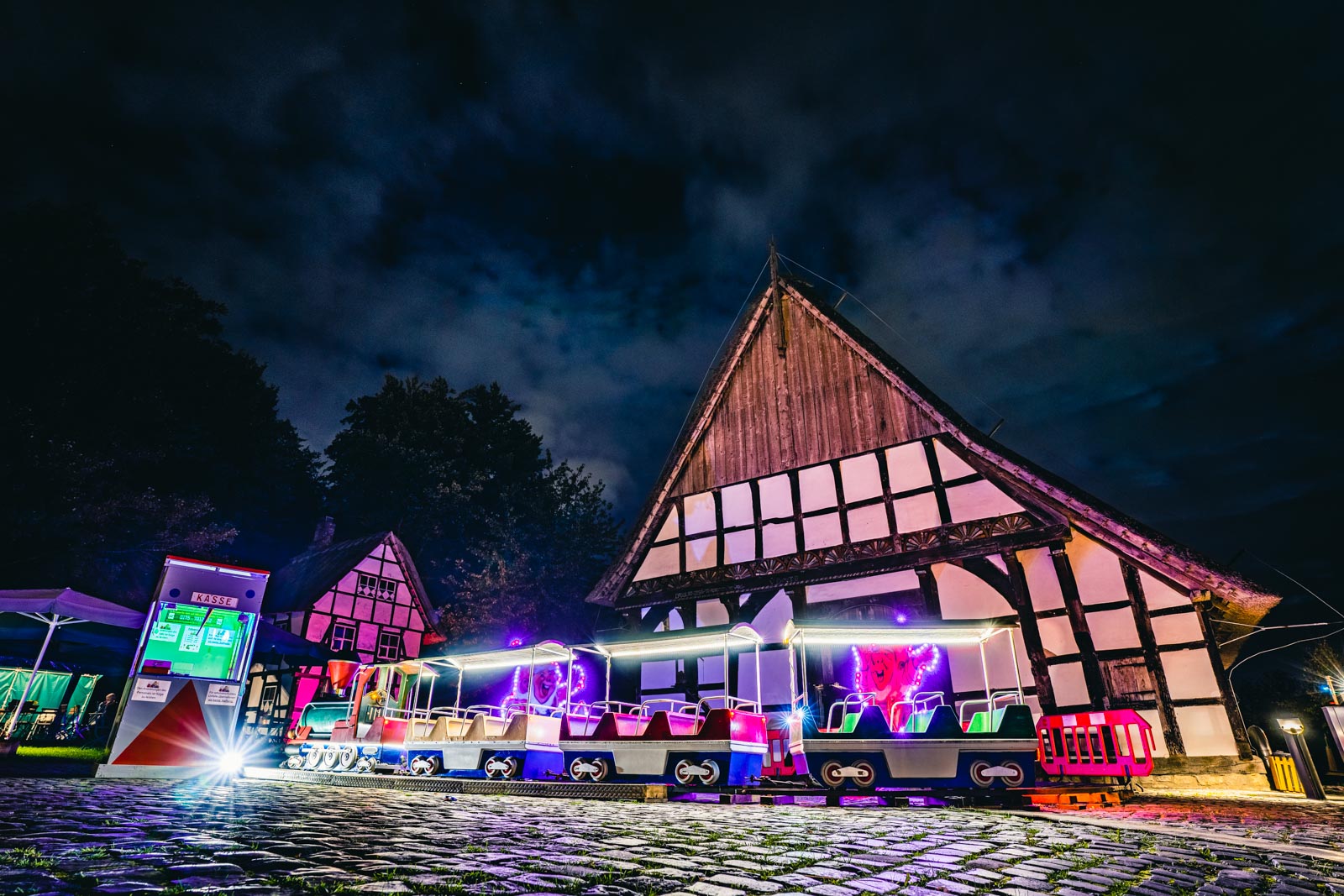
Nachtansichten 2021 (Night Views) - Nicolai Church
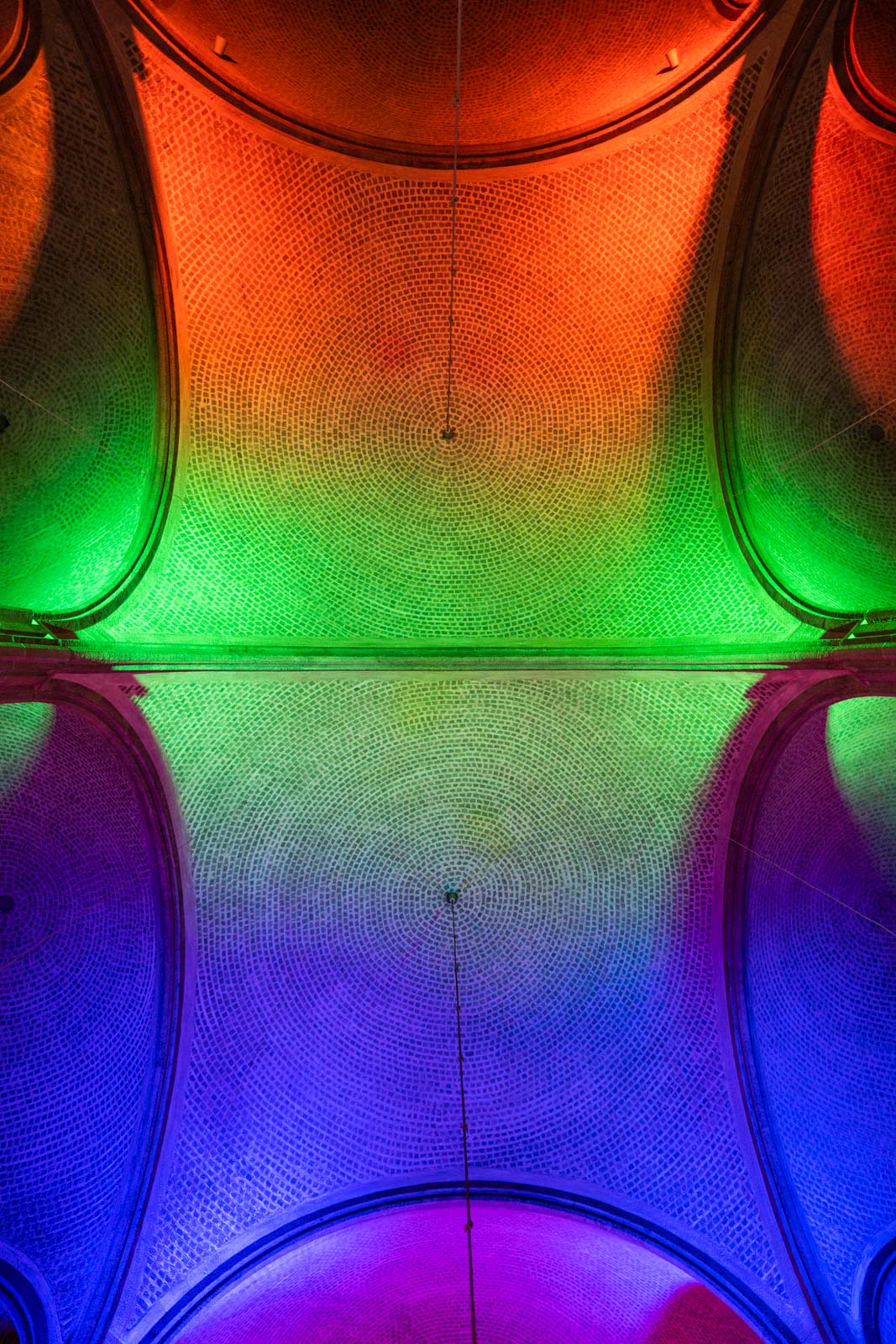
Nachtansichten 2021 (Night Views) - City Hall #1
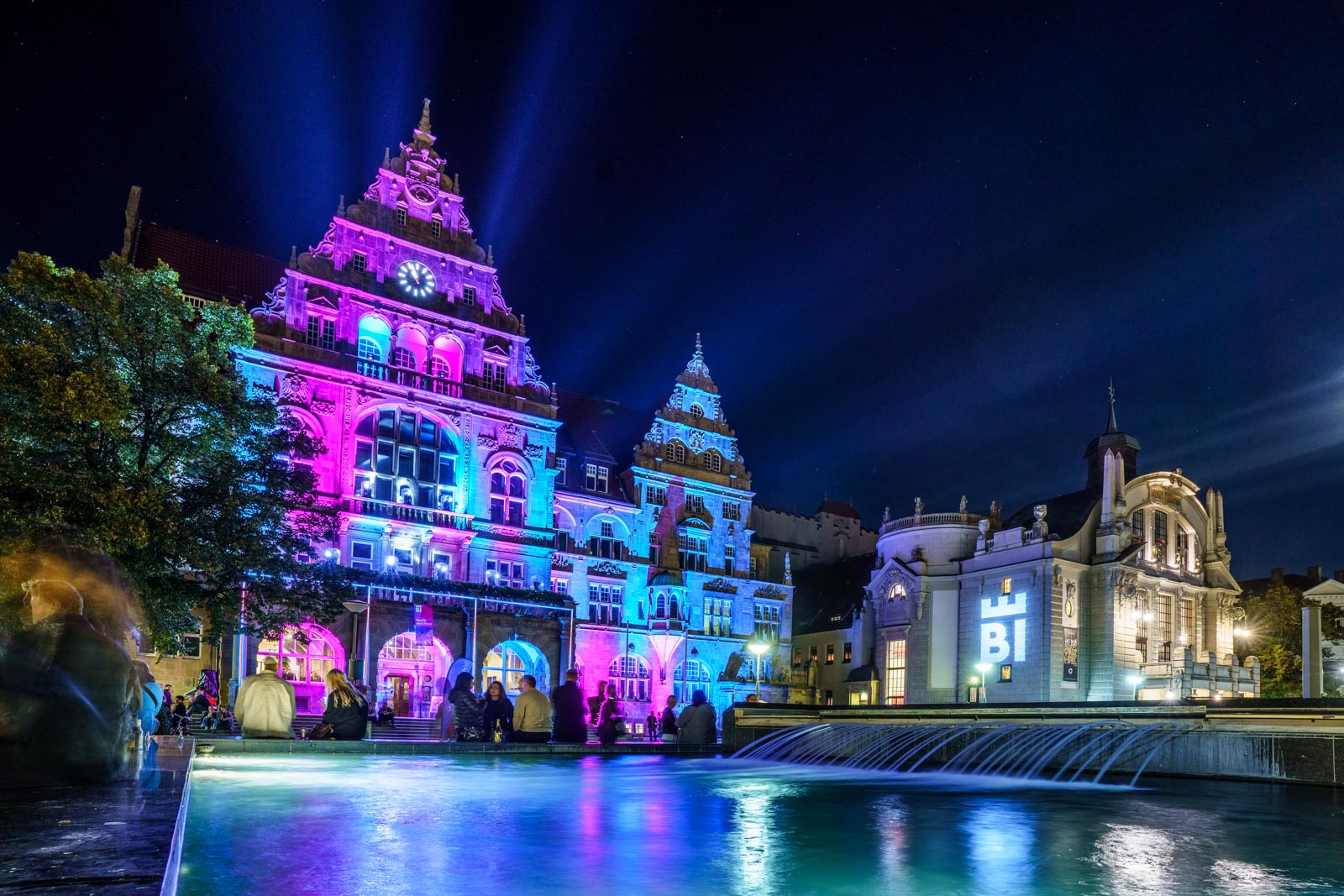
Nachtansichten 2021 (Night Views) - City Hall #2
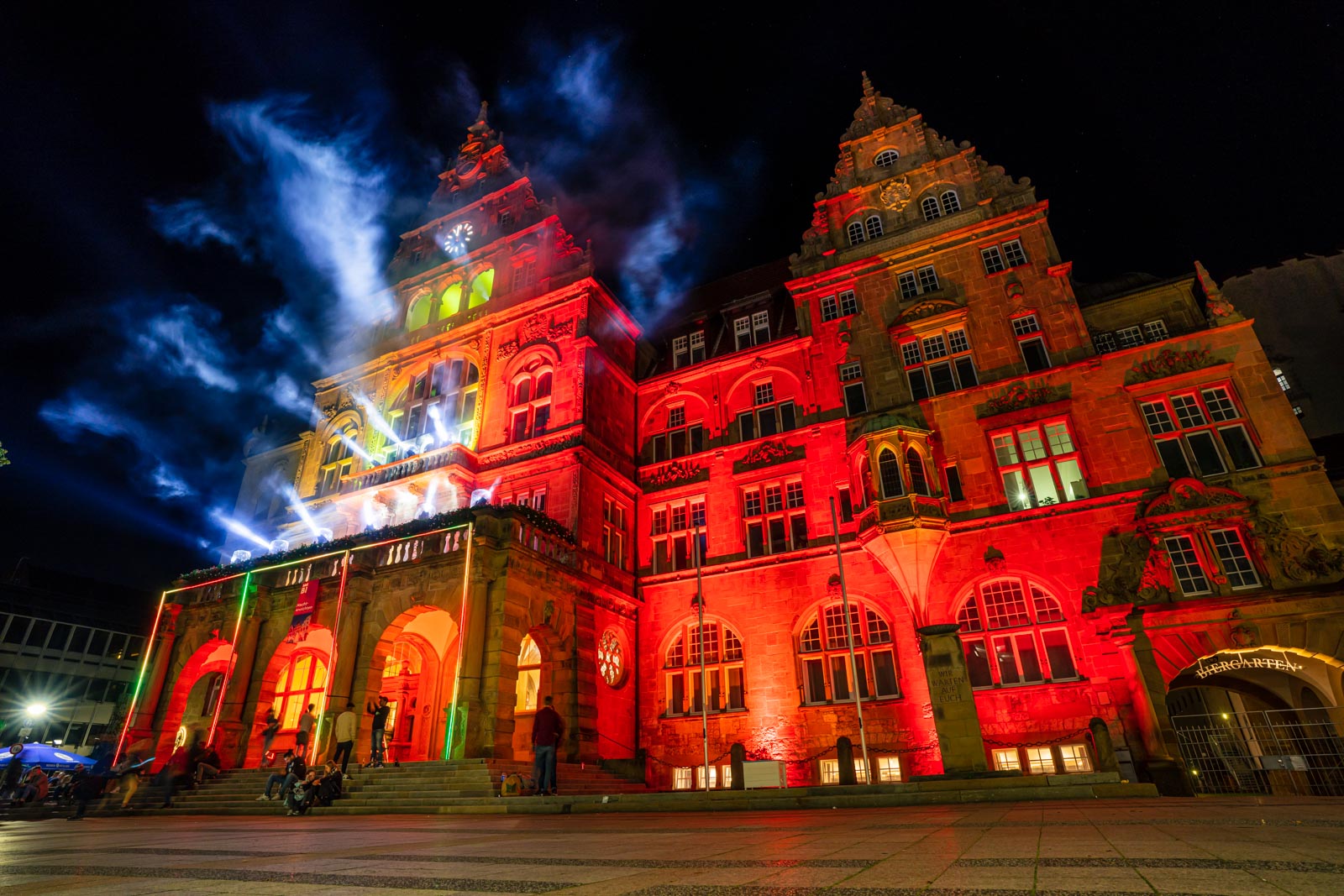
08/30/2021
This year, the German state of North Rhine-Westphalia turns 75. It was established one year after the end of the Second World War on August 23, 1946, on the orders of the British military administration. What was special about this foundation was that there had been no historical predecessor state on the territory of today's federal state. The provinces of Rhineland and Westphalia and the small Free State of Lippe had never been a single entity before. The foundation was therefore also an experiment. 75 years later, it can be said that it worked. Today, North Rhine-Westphalia is the most populous state in Germany, with the most large cities and the greatest economic output.
Actually, that's a reason to celebrate. Unfortunately, that is not possible this year due to the COVID 19 pandemic. Nevertheless, there are smaller activities. One of them is that during the period from August 23 to 30, 2021, many city halls will be illuminated at night in the North Rhine-Westphalian state colors of red, white and green. Also in my hometown of Bielefeld.
75 years of NRW - Bielefeld City Hall #1
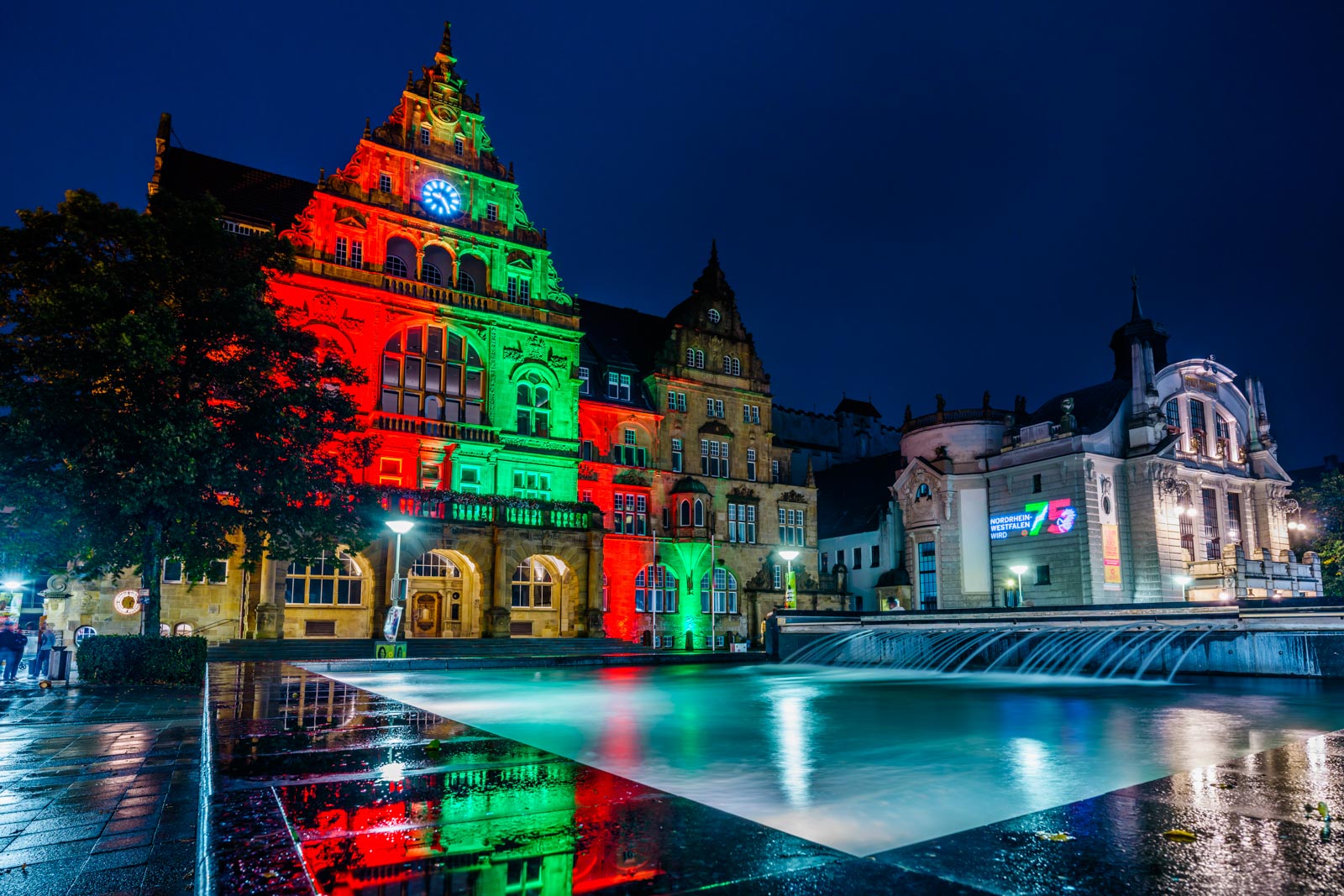
75 years of NRW - Bielefeld City Hall #2
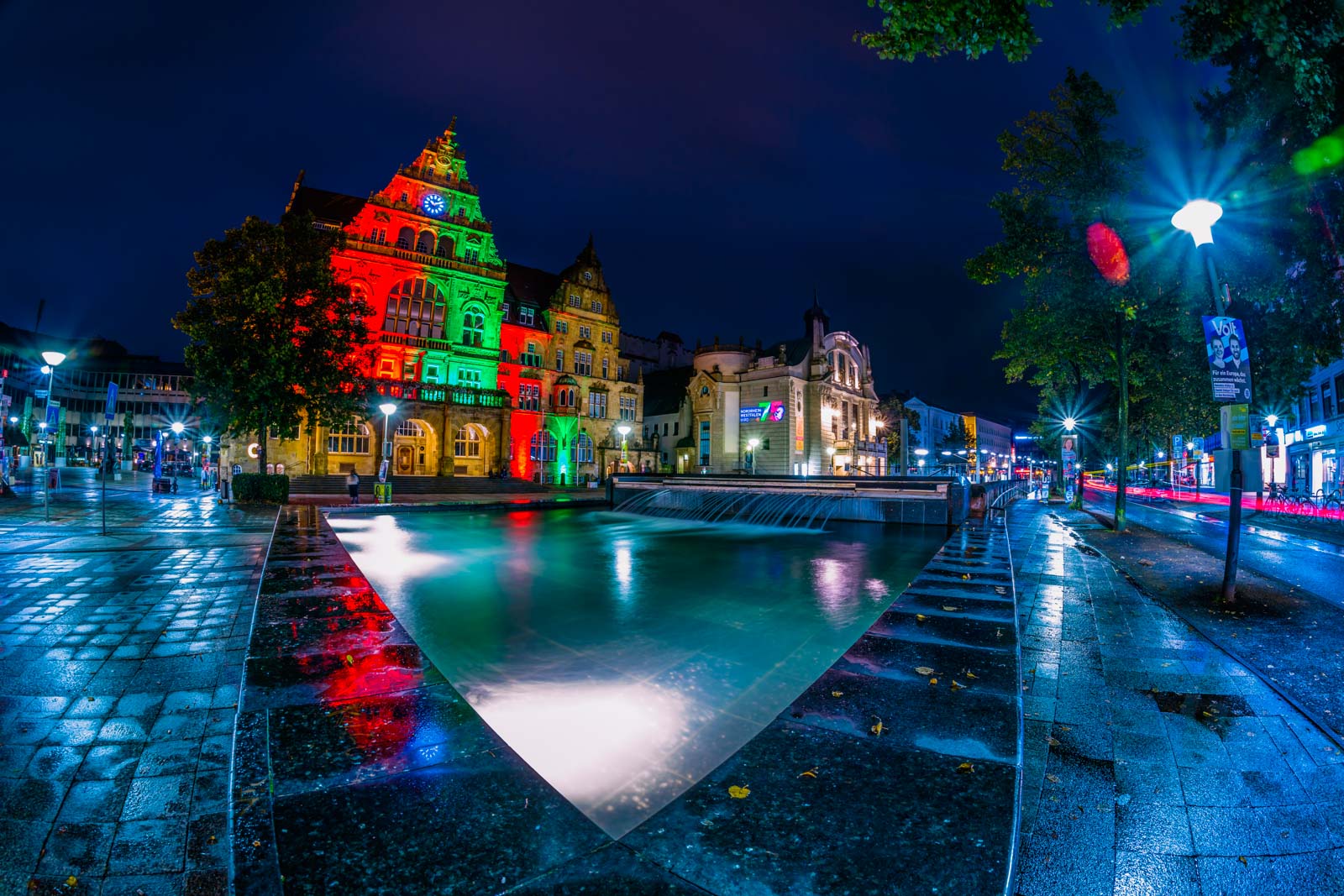
75 years of NRW - Bielefeld City Hall #3
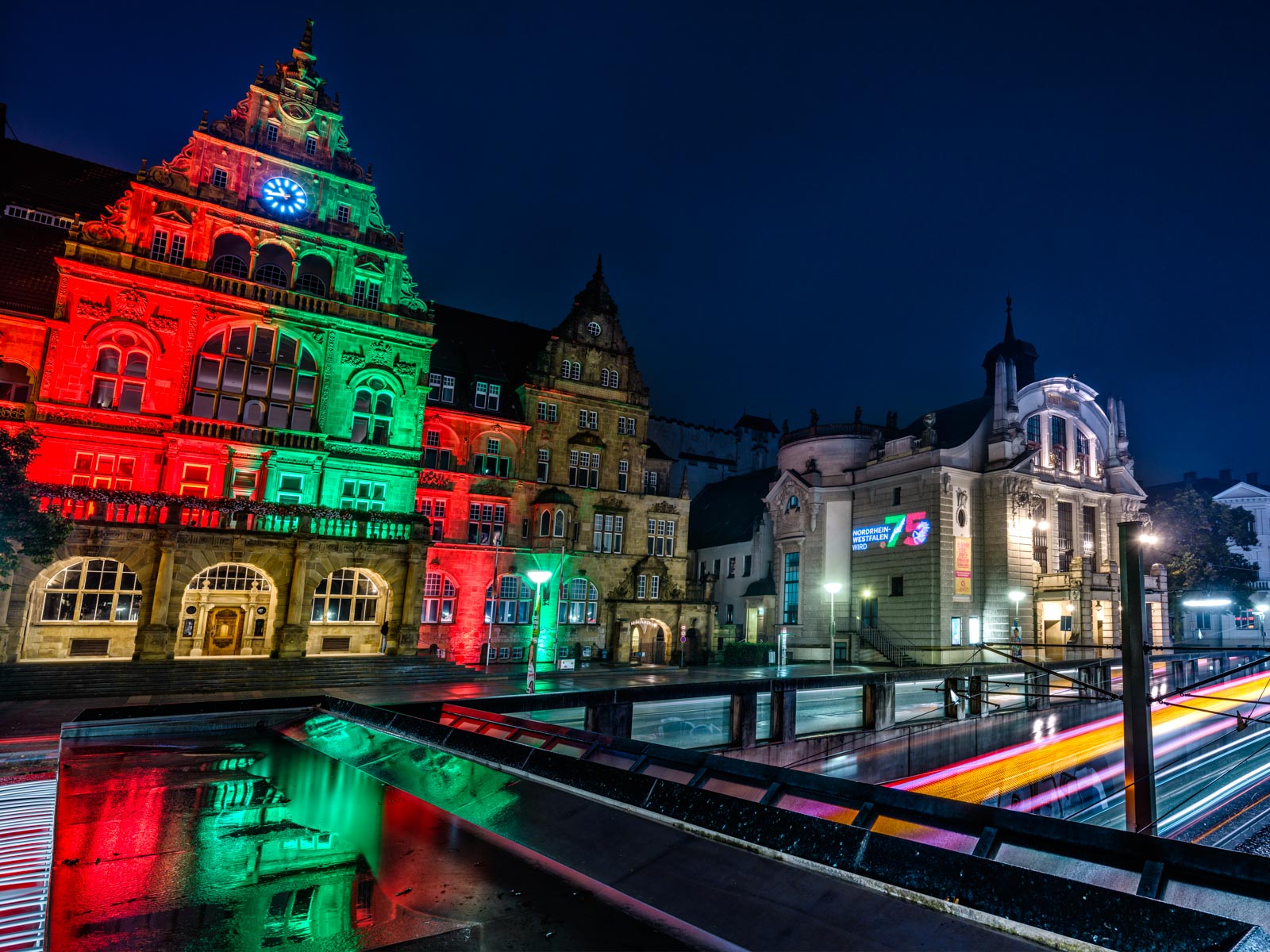
08/28/2021
In Bielefeld's Stieghorst district, the Telekom AG constructed a new building for its subsidiary T-Systems in the 1990s. What exactly goes on in there, I don't know. From the outside, it looks like there's a lot of information technology in there. You can argue about the architecture, of course, but I find it quite interesting. And they resisted the easy solution of simply putting a faceless cuboid hall on the field. I've always wanted to photograph the building, but I've never really succeeded over the years. One evening in August, I then made another attempt and with the result I am now satisfied on the whole.
T-Systems building in the evening light #1
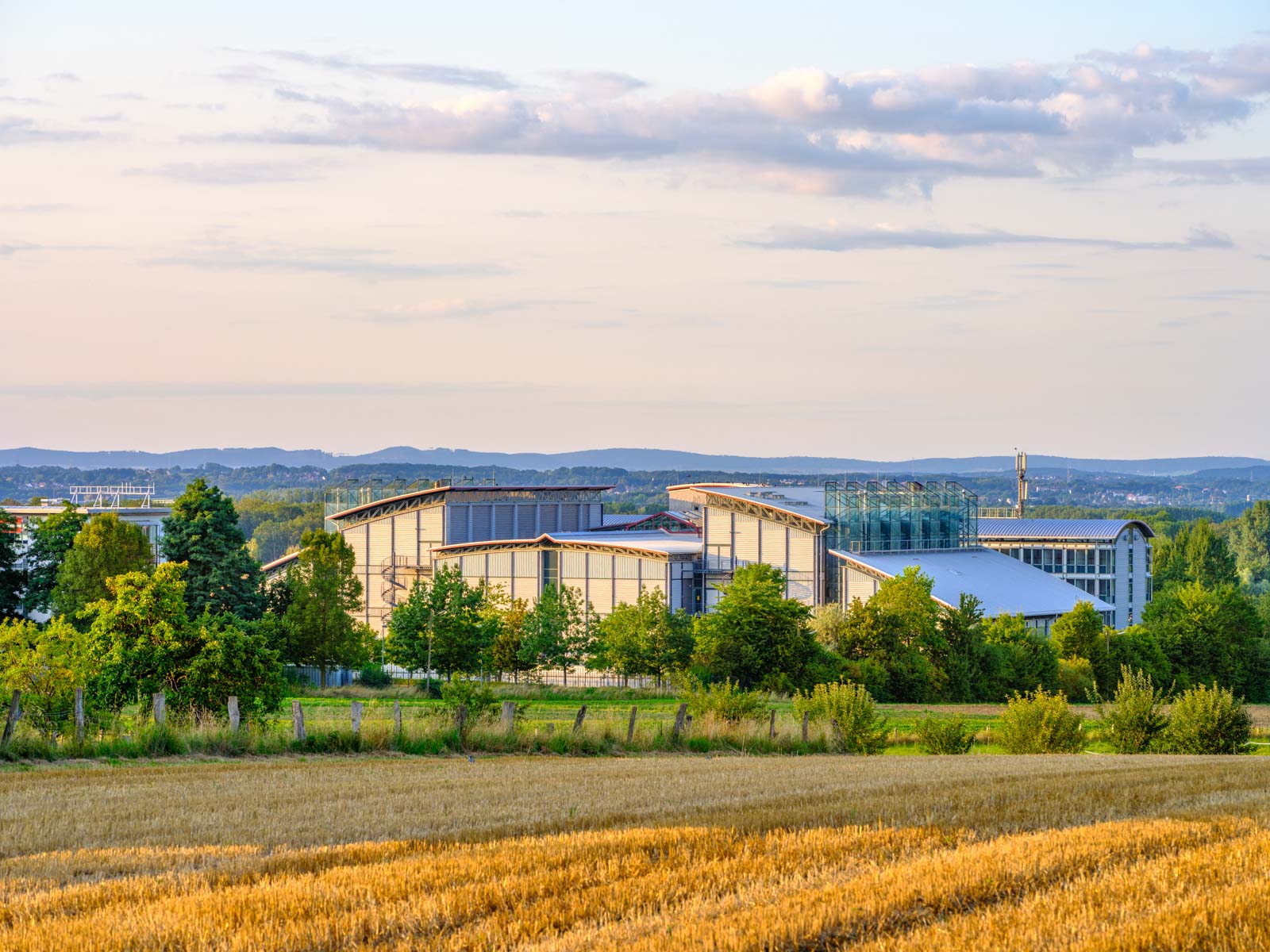
T-Systems building in the evening light #2
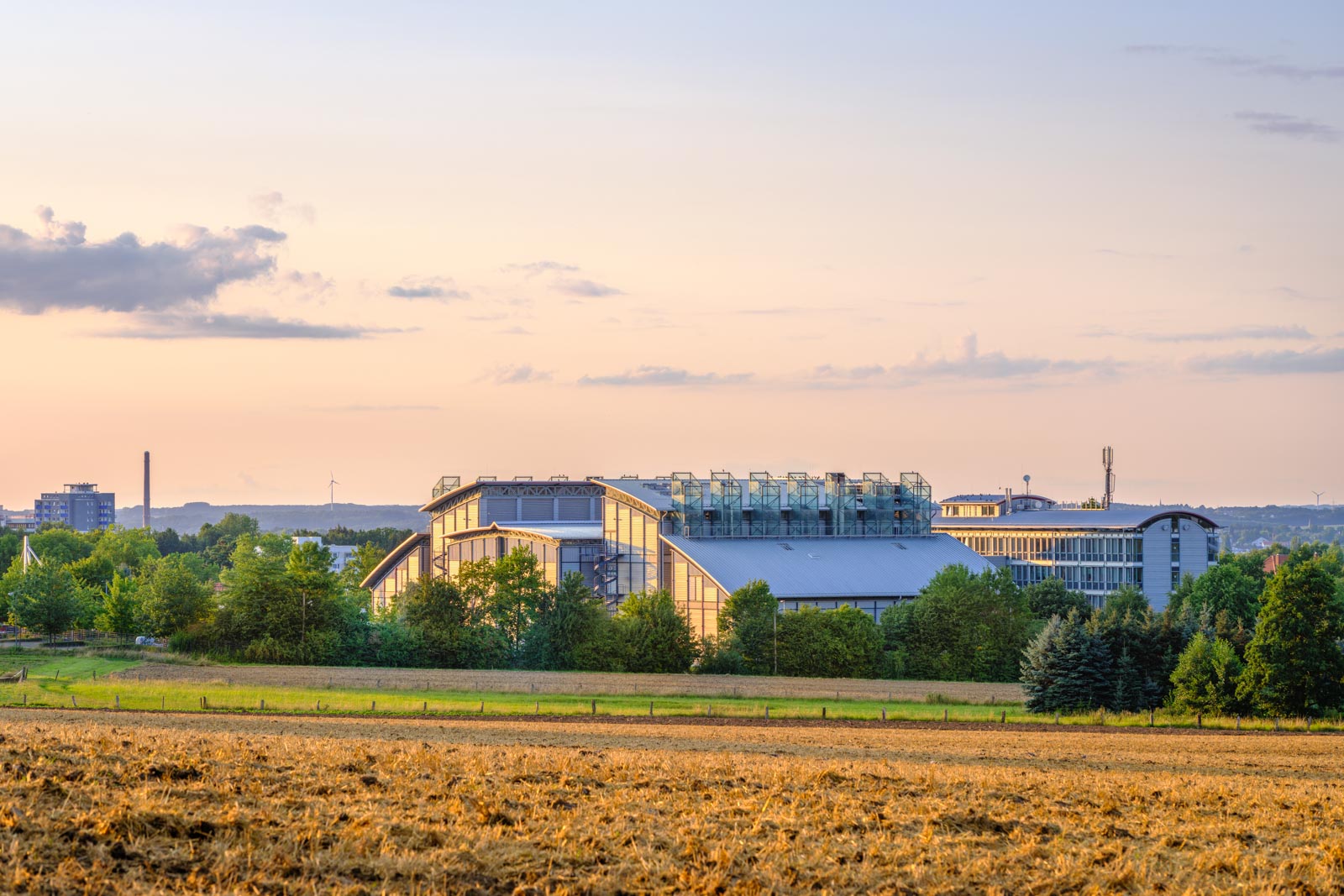
T-Systems building in the evening light #3
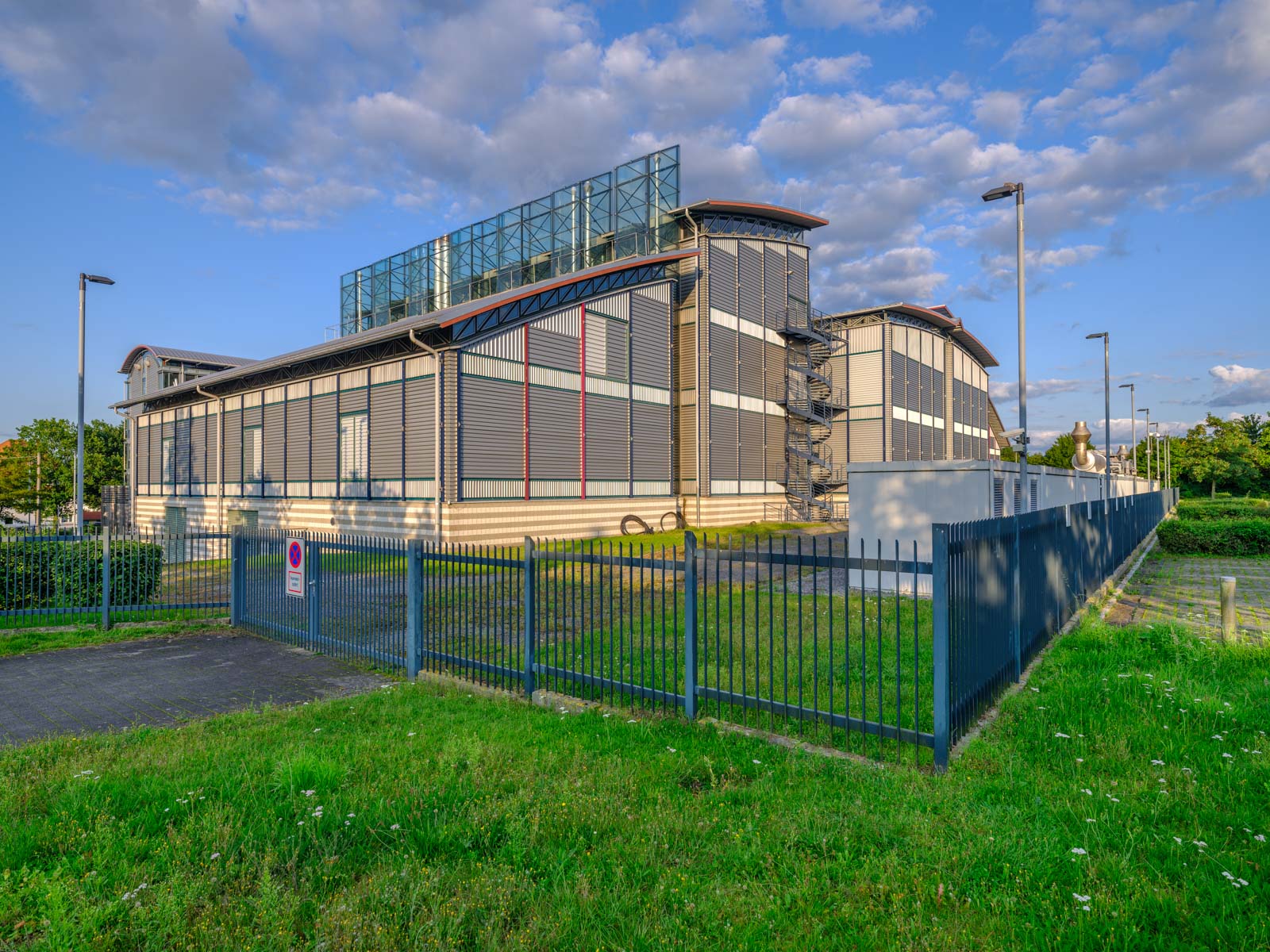
08/01/2021
I'm often drawn to Bielefeld's main railway station. To go somewhere by train, but also because there are always interesting photo opportunities around the station.
A big advantage of the main tracks is that they run from west to east and therefore the sun rises directly above them in the morning. At least if you catch it at the right time of year. The summer months are perfect for photos of the sunrise at this spot, you just have to wait for a nice train then.
Freight train at Bielefeld main station
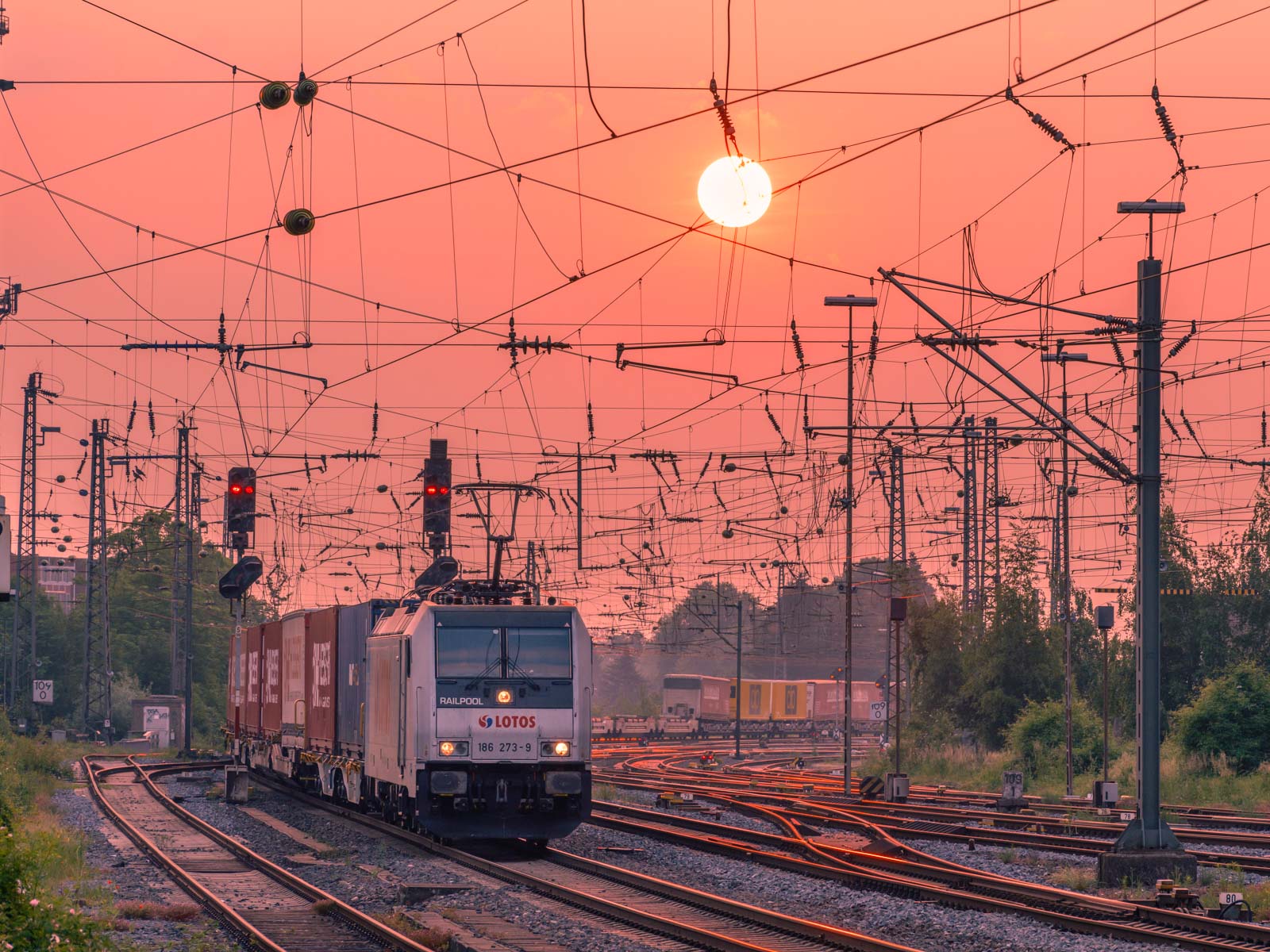
07/27/2021
The Nikolai Church is located in Bielefeld's old town. It is the oldest church in the original city area. It is not known exactly when the present building was erected. The parish was founded in the first half of the 13th century, but the present church was probably not built until the 14th century. Like many other buildings, the church was badly damaged during the Second World War. All that was left of the tower was a stump. Today's tower dome was built at the beginning of the 1960s entirely in the style of the time.
From the 'Johannisberg', a hill of the Teutoburg Forest, south of the city centre, there is a beautiful view of the church tower. Especially early in the morning.
Tower of Nikolai Church at dawn
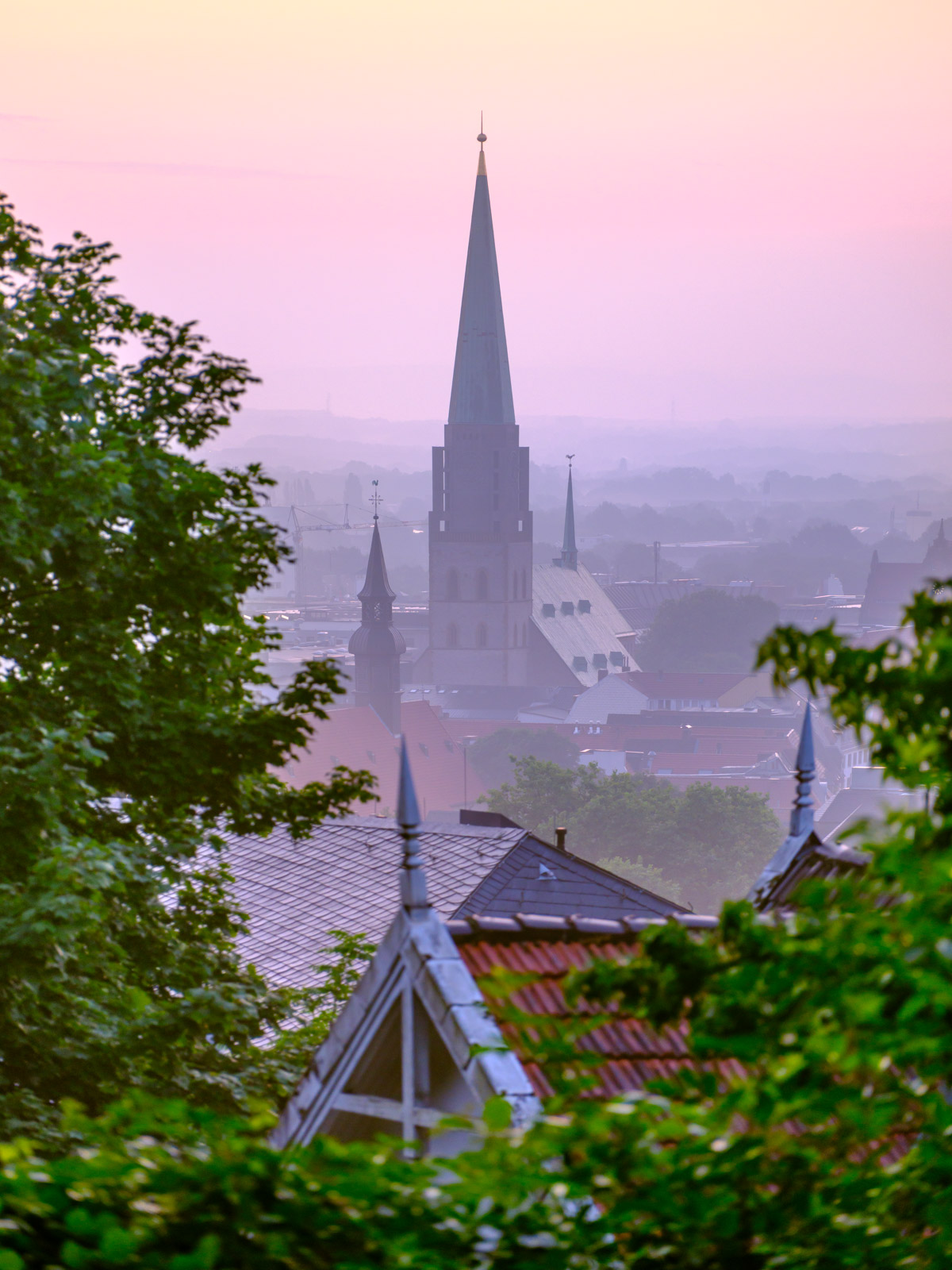
Nikolai Church and Bielefeld city center at sunrise
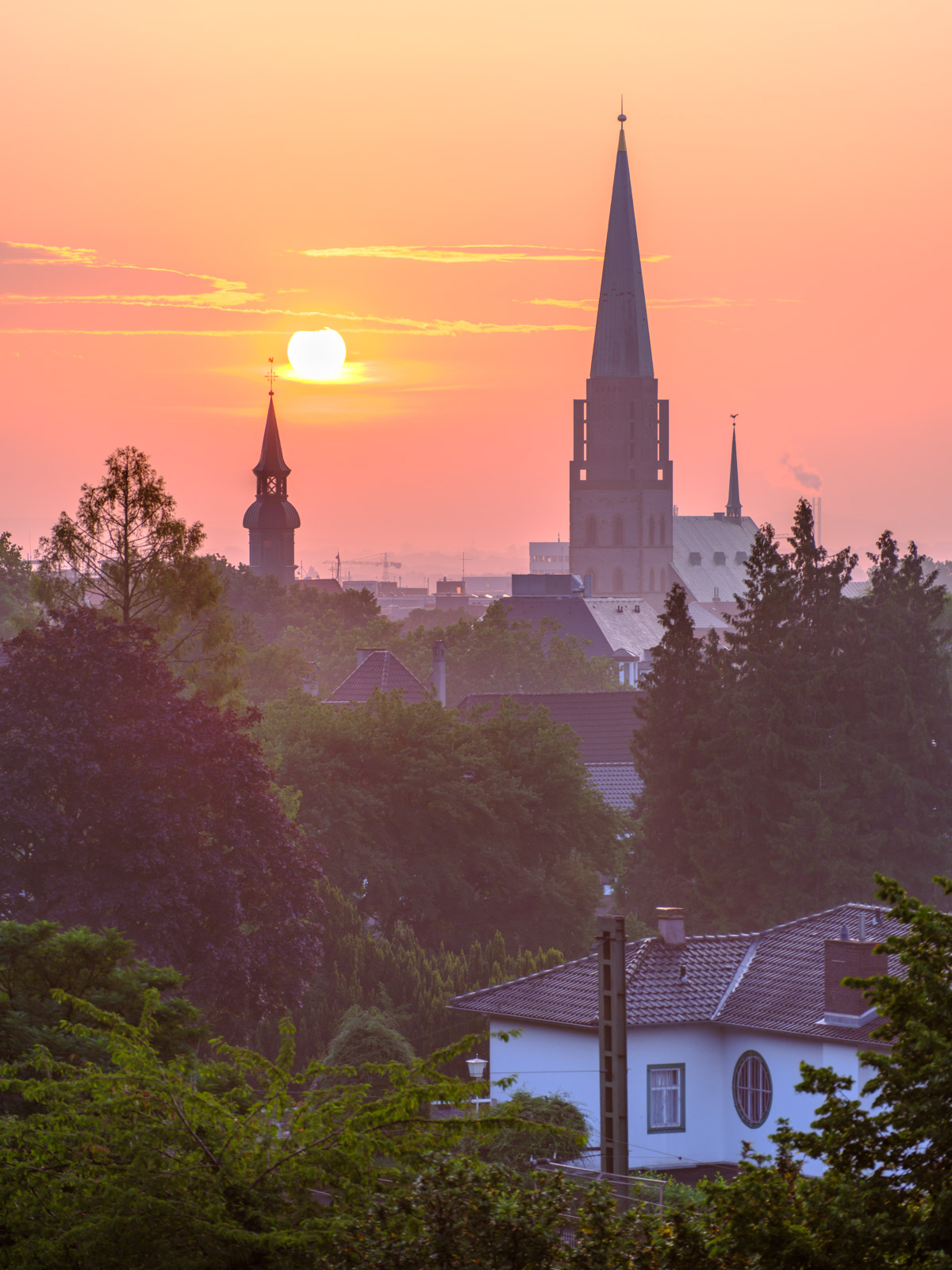
Tower of Jodokus Church
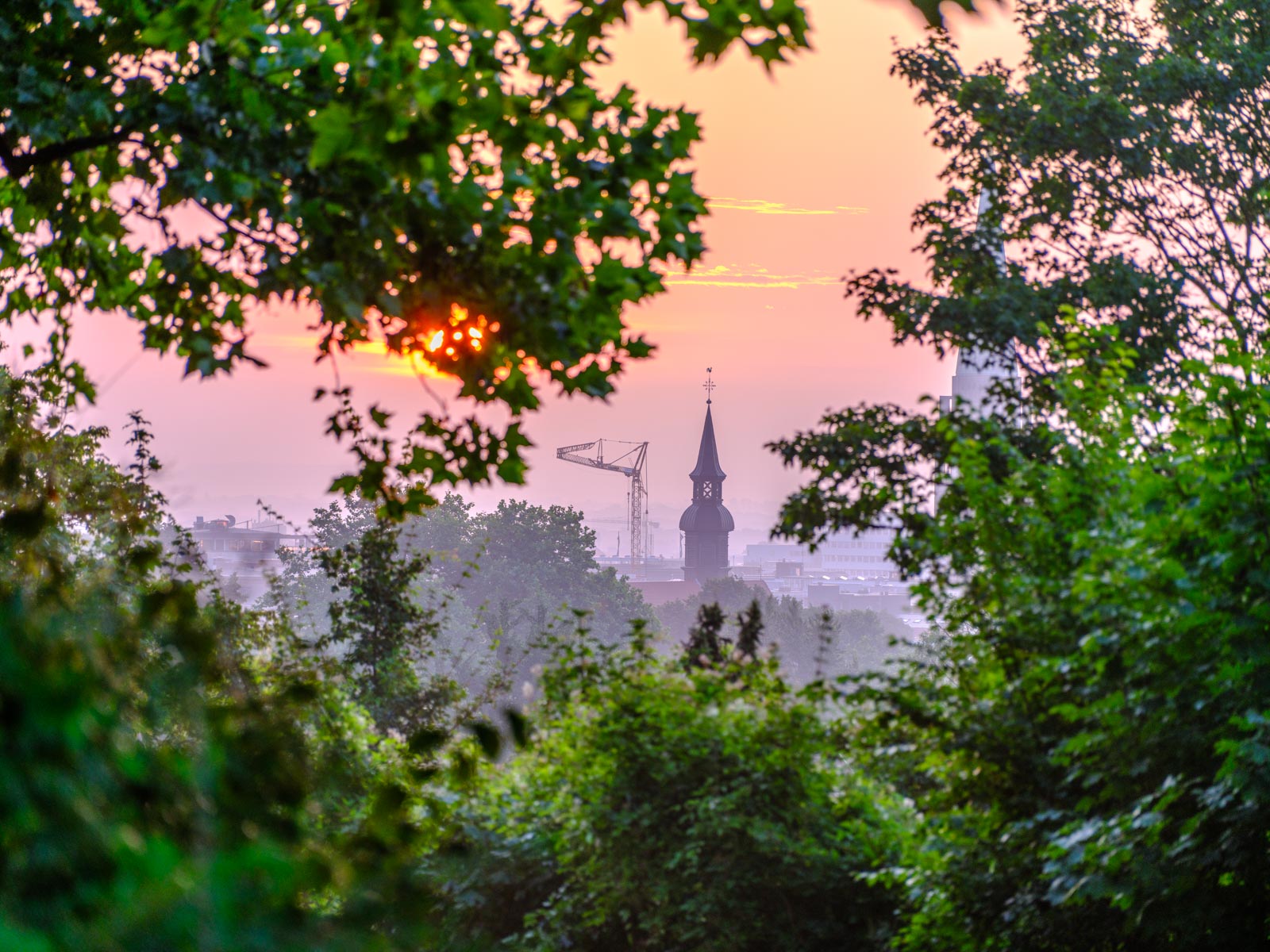
Tower of the Nikolai Church on Obernstraße
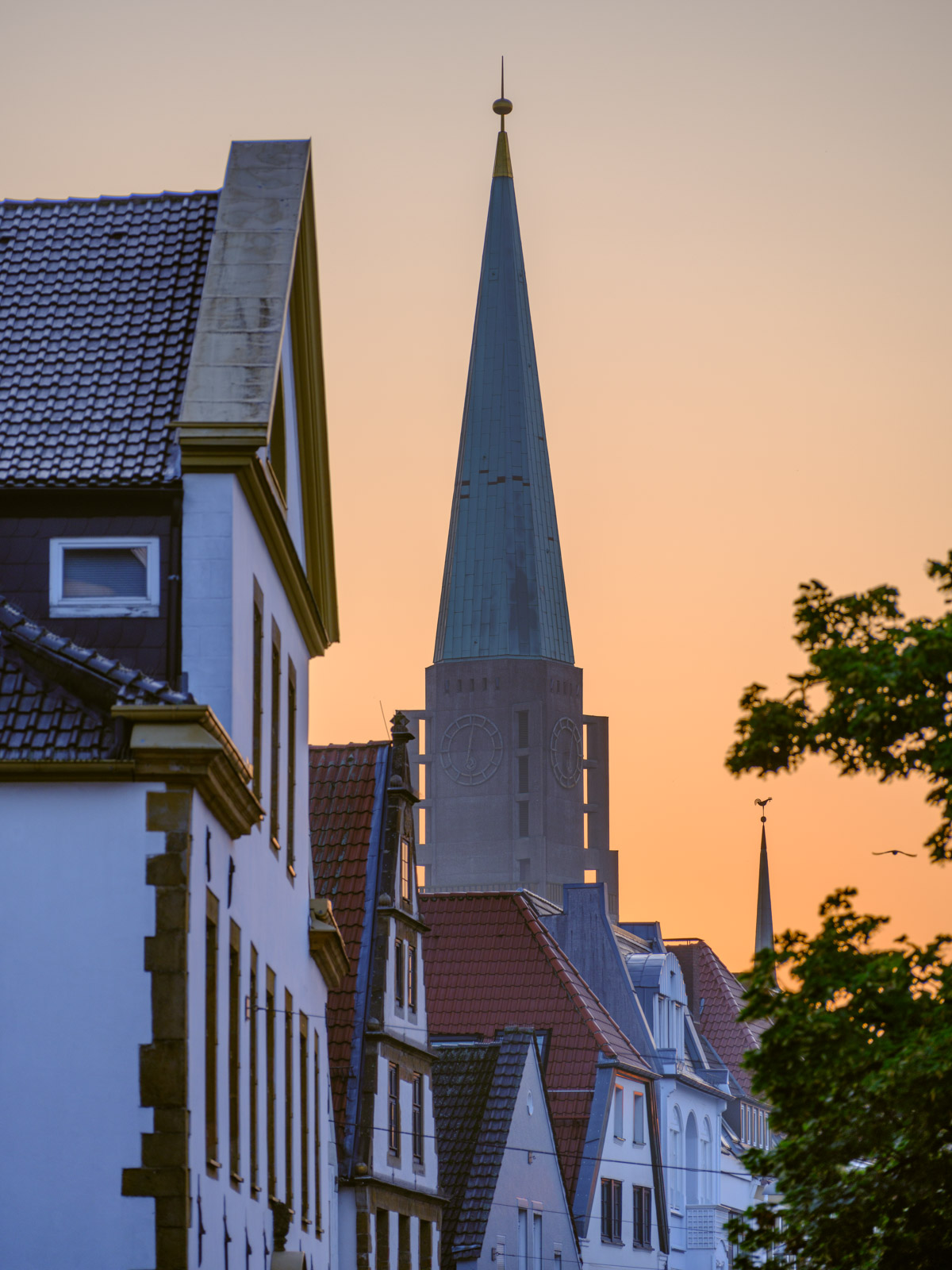
07/23/2021
Today I have some pictures of the Chamber of Crafts in Bielefeld. More precisely, of the 'Campus Handwerk', which is the name of the building in which the Chamber of Crafts has been based for a few years now.
The building complex was newly constructed a few years ago and is located directly at the main railway station next to the railway tracks. Industrial companies used to be located here. After these companies either closed down or moved to other locations, the site was unused for many years. All in all, the area was not very nice. That has now changed. In addition to the 'Campus Handwerk', the new station district has been built here and a new office quarter has been created opposite on the other side of the railway tracks. It's remarkable what can be done with well-considered urban planning!
Water reflection at Campus Handwerk
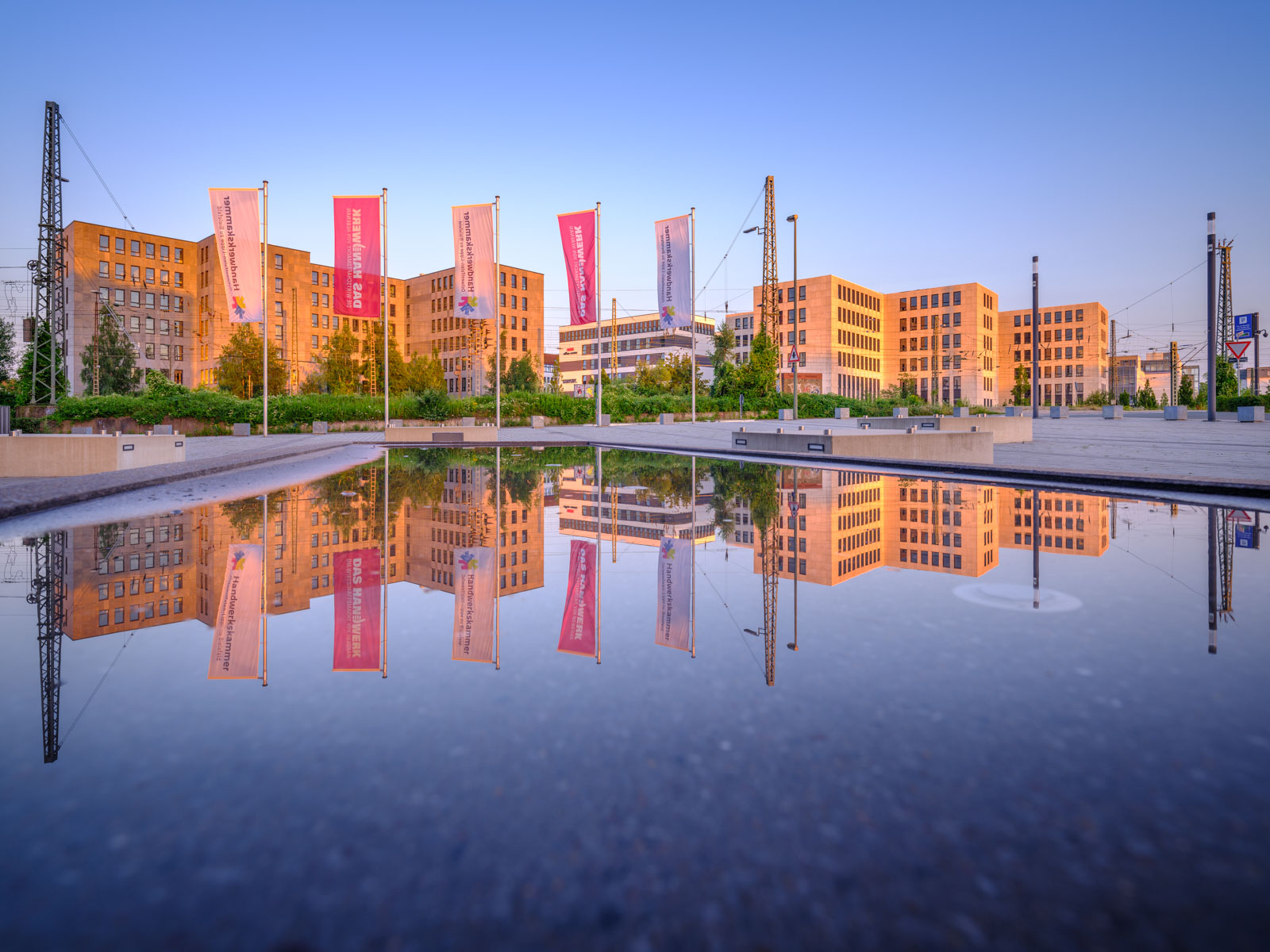
Campus Handwerk at dusk #1
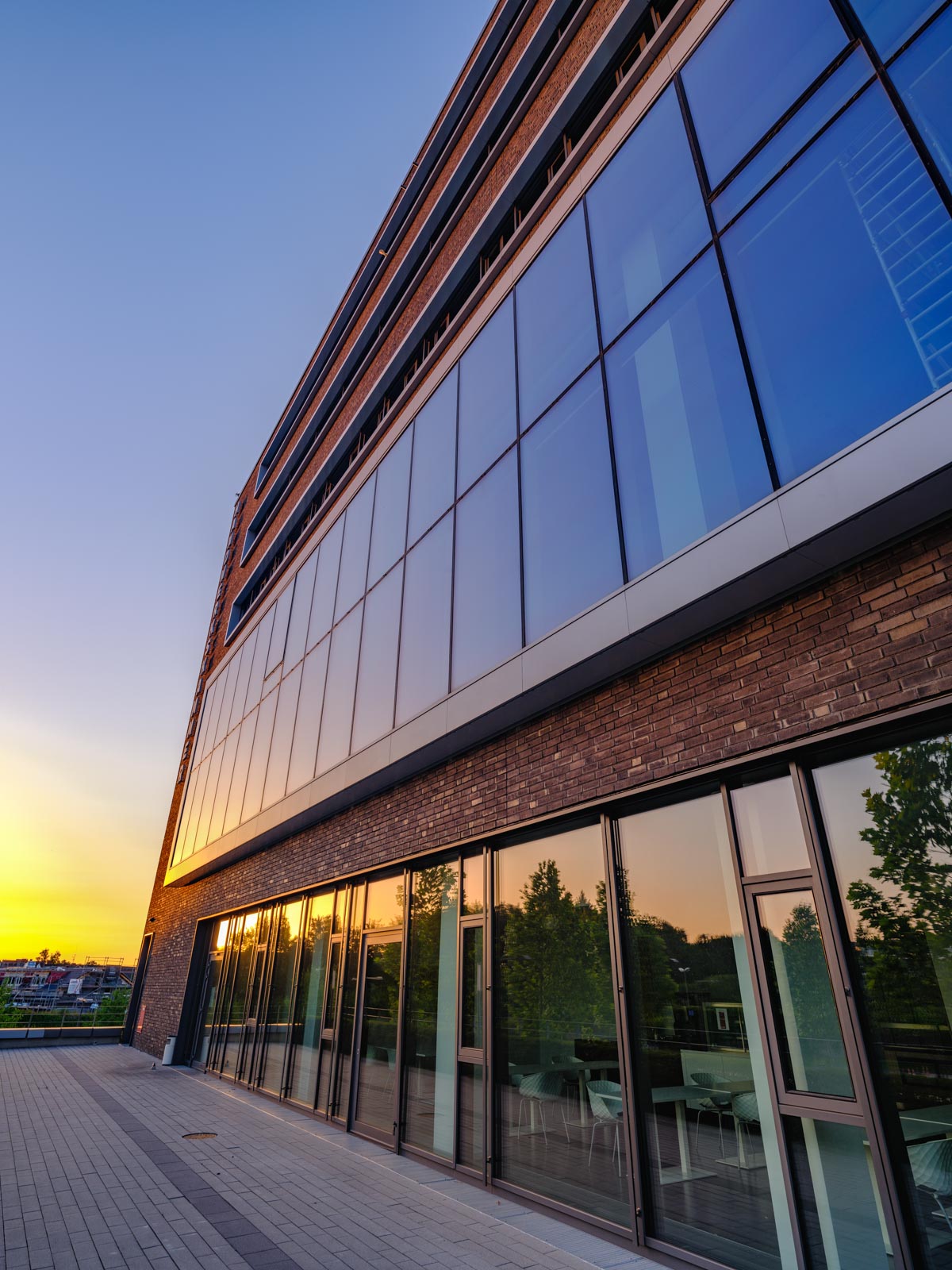
Campus Handwerk at dusk #2
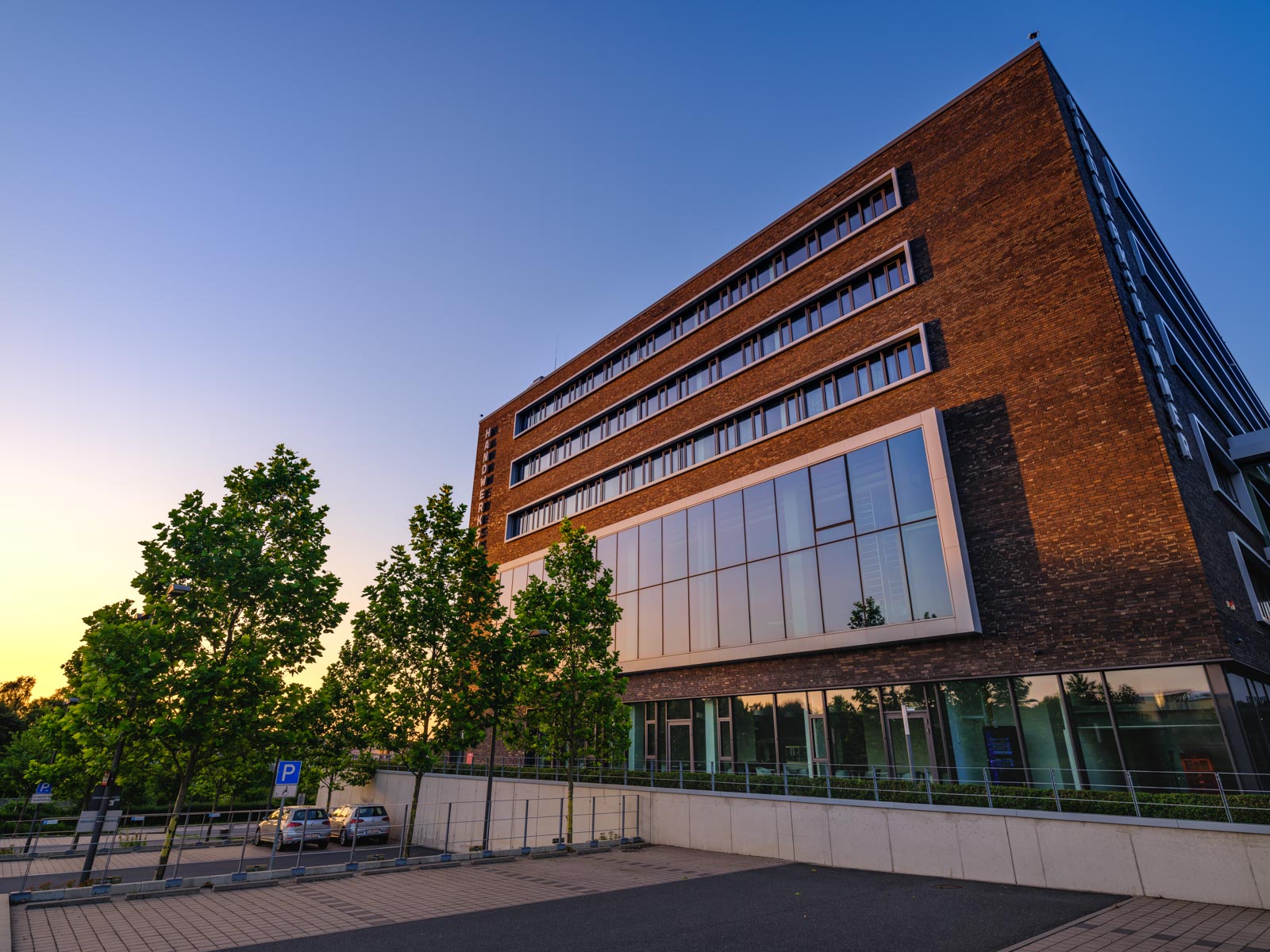
Campus Handwerk at dusk #3
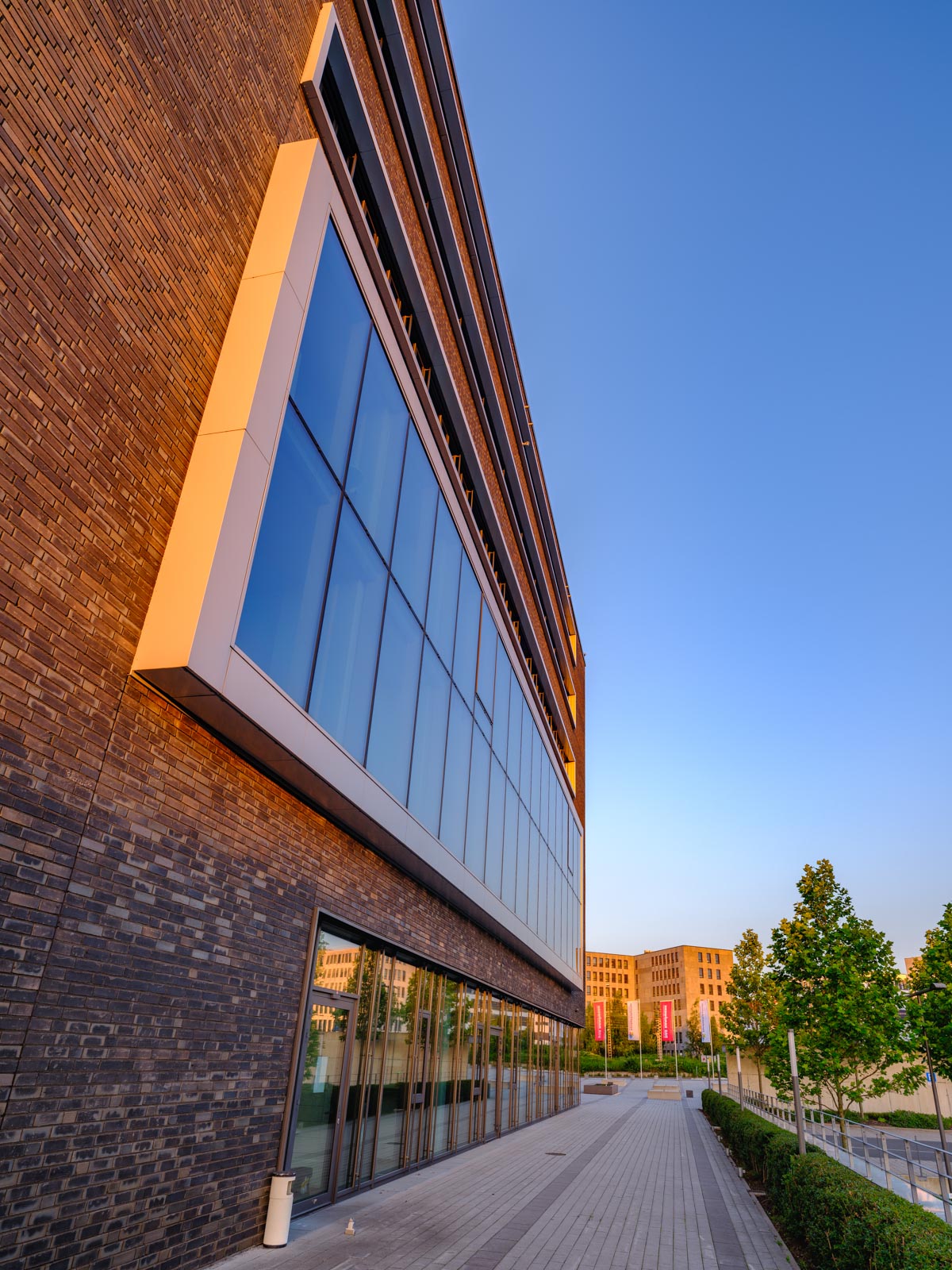
Campus Handwerk at dusk #4
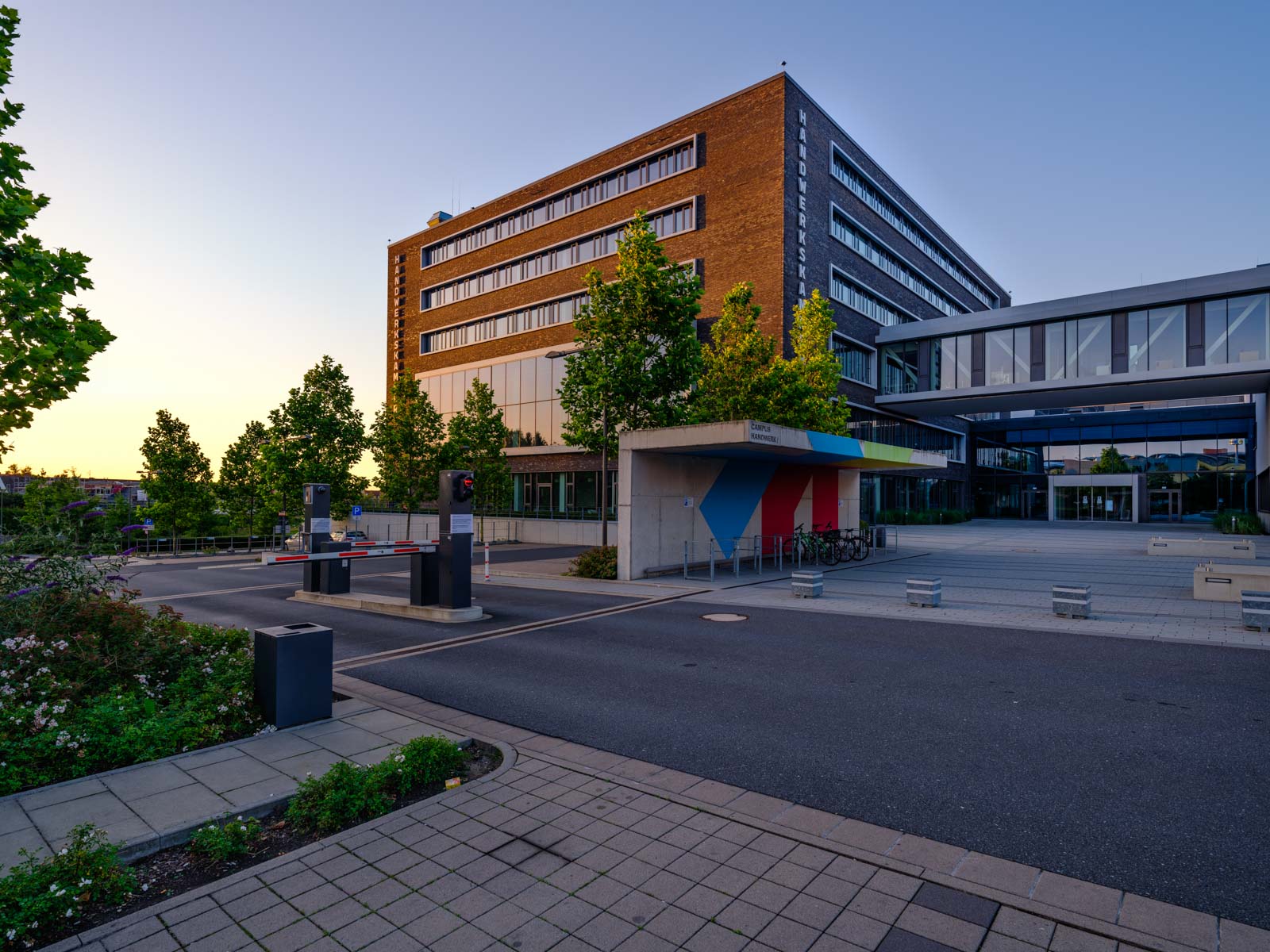
Campus Handwerk at dusk #5
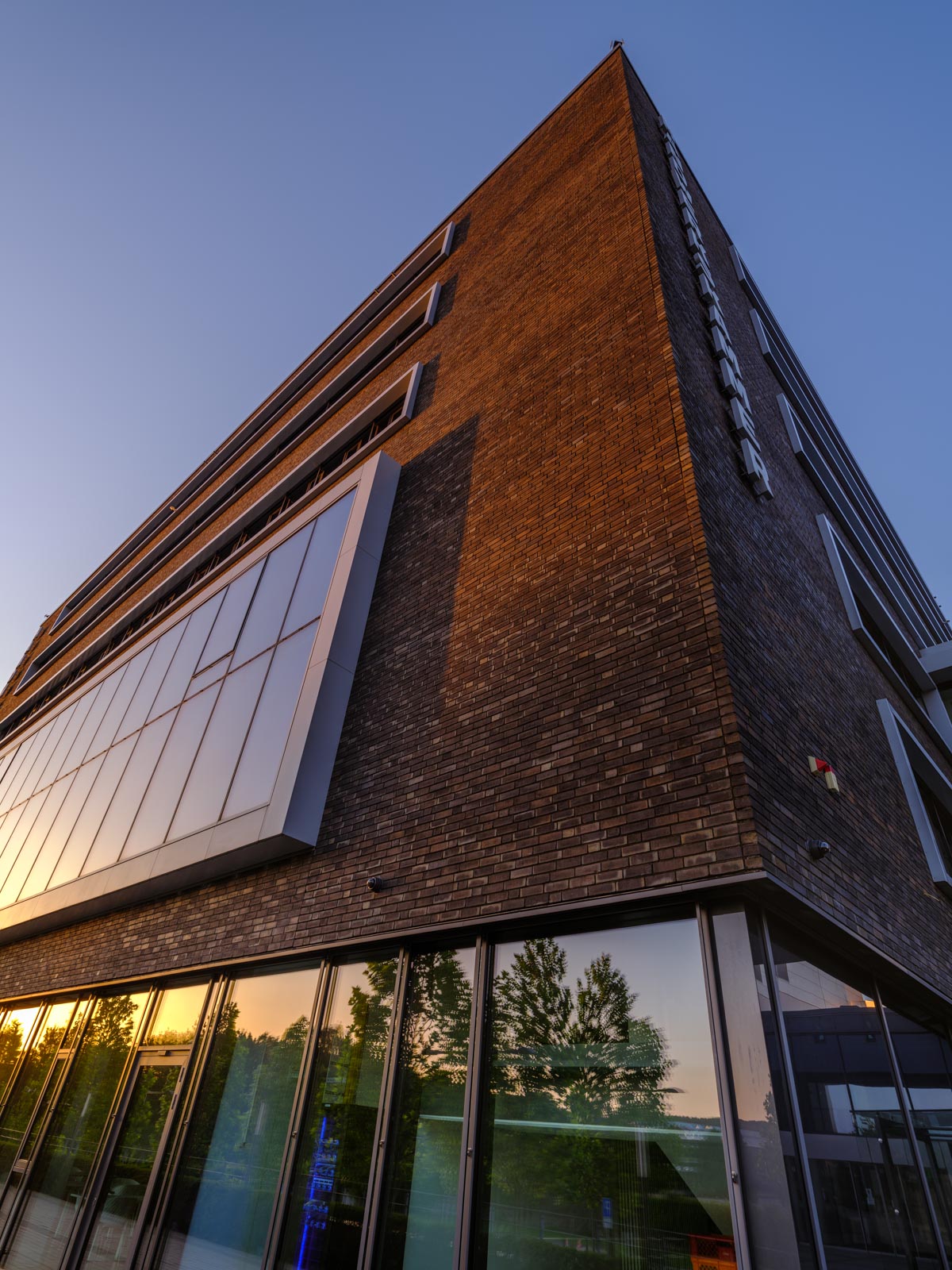
Campus Handwerk at dusk #6
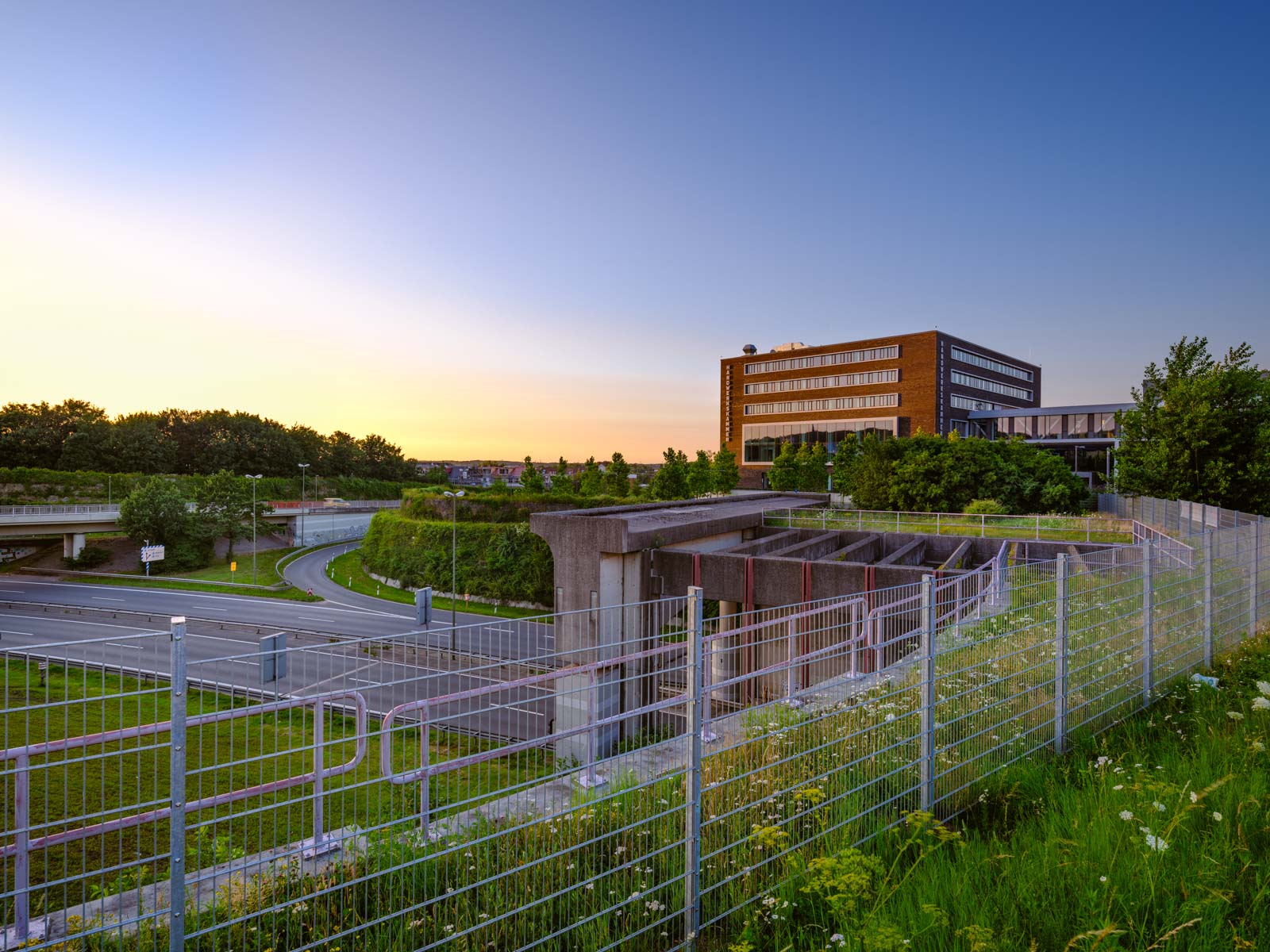
Campus Handwerk at dusk #7
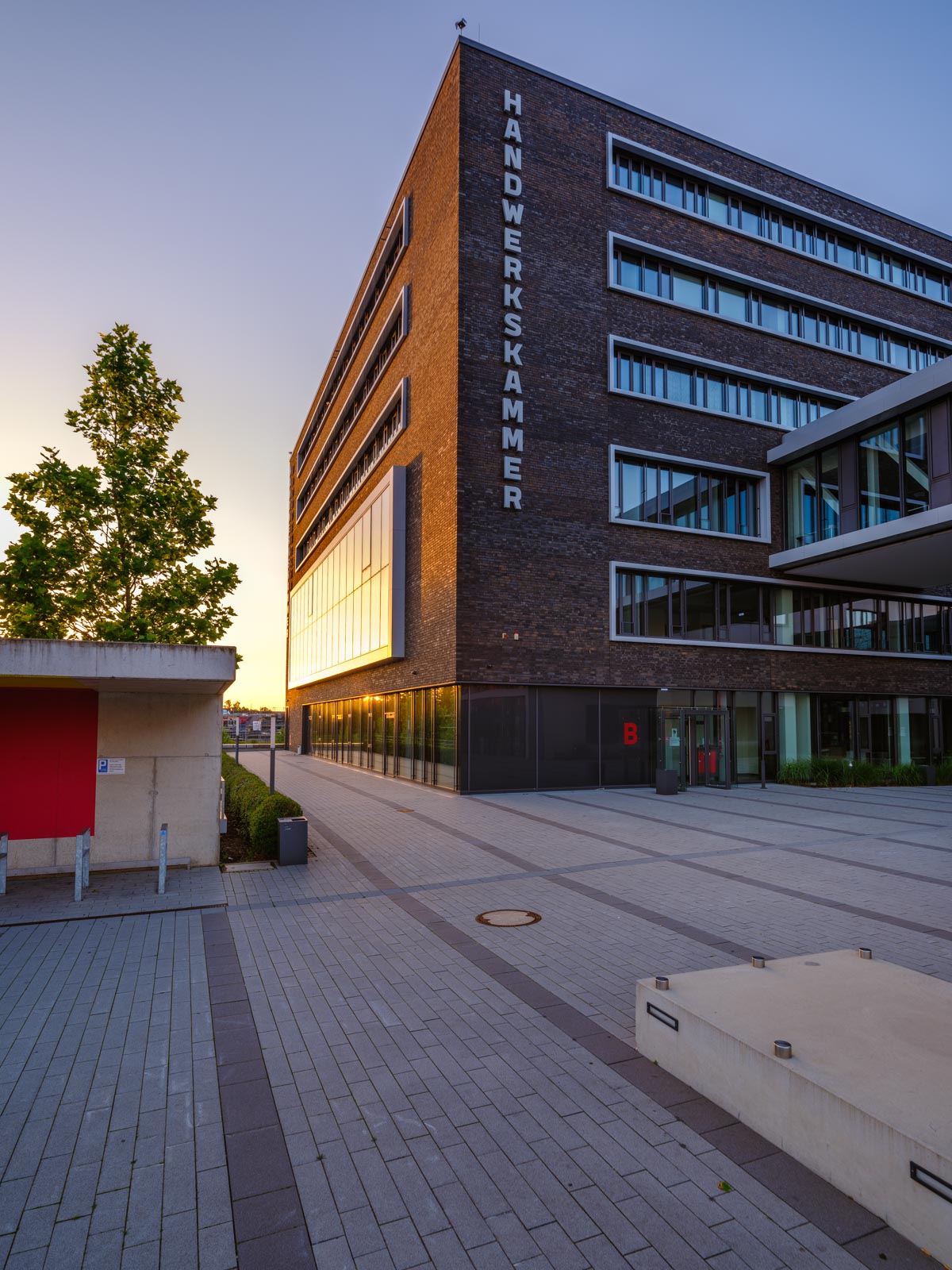
07/11/2021
Today it's time again for some impressions from my hometown Bielefeld. The pictures were taken on a few walks through the city center. Sometimes in the morning and sometimes in the afternoon and early evening. I took all the photos with the camera Fujifilm GFX 100S and various Fujinon lenses.
I honestly don't know if it was like this before, but the old town is decorated with lots of flowers this summer. looks really nice. The city administration has put big flower tubs in the main shopping streets and also many of the merchants, cafes and pubs join in. Really nice. And then, of course, there is our linen weaver. In the past, that is until the early 20th century, a lot of flax was grown around Bielefeld, which was then processed into linen in the factories in the city. Today, this no longer plays a role but we have set a monument to the old traditions. The Leineweber monument on the Altstädter Kirchplatz.
Our tram is not nearly as old as the linen weaving tradition, but it is still typical for Bielefeld. It runs on a total of four lines and connects the various districts with the city center. Very practical and environmentally friendly. On Kreuzstraße between the old town and Sparrenburg Castle, I photographed line 4 in the evening backlight.
The KONTOR building is located on the western edge of the city centre. Today it houses a civil engineer's office and a call centre. It was built in the early 20th century and is particularly striking because of its round main building. What even many Bielefeld citizens don't know is that it is a protected building, and that's a good thing.
A real landmark of the city, besides the Sparrenburg, is the Nikolai Church in the old town. Because it lies in the middle of the city and is therefore quite densely surrounded, it is not so easy to take a good photo of it. But with the right light and a few cyclists in the foreground, it works quite well. Also in the city center is the Ritterstraße. It is a small side street with smaller stores and cafes. Is a nice area and is photographed accordingly often. I used the reflections in a shop window to make a picture that stands out from the crowd. Finally, here is a picture from Oldentruper Straße. It is not located directly in the city center, but it is an important feeder road. And the backlight was just too beautiful not to take the photo.
Flowers on the Old Market
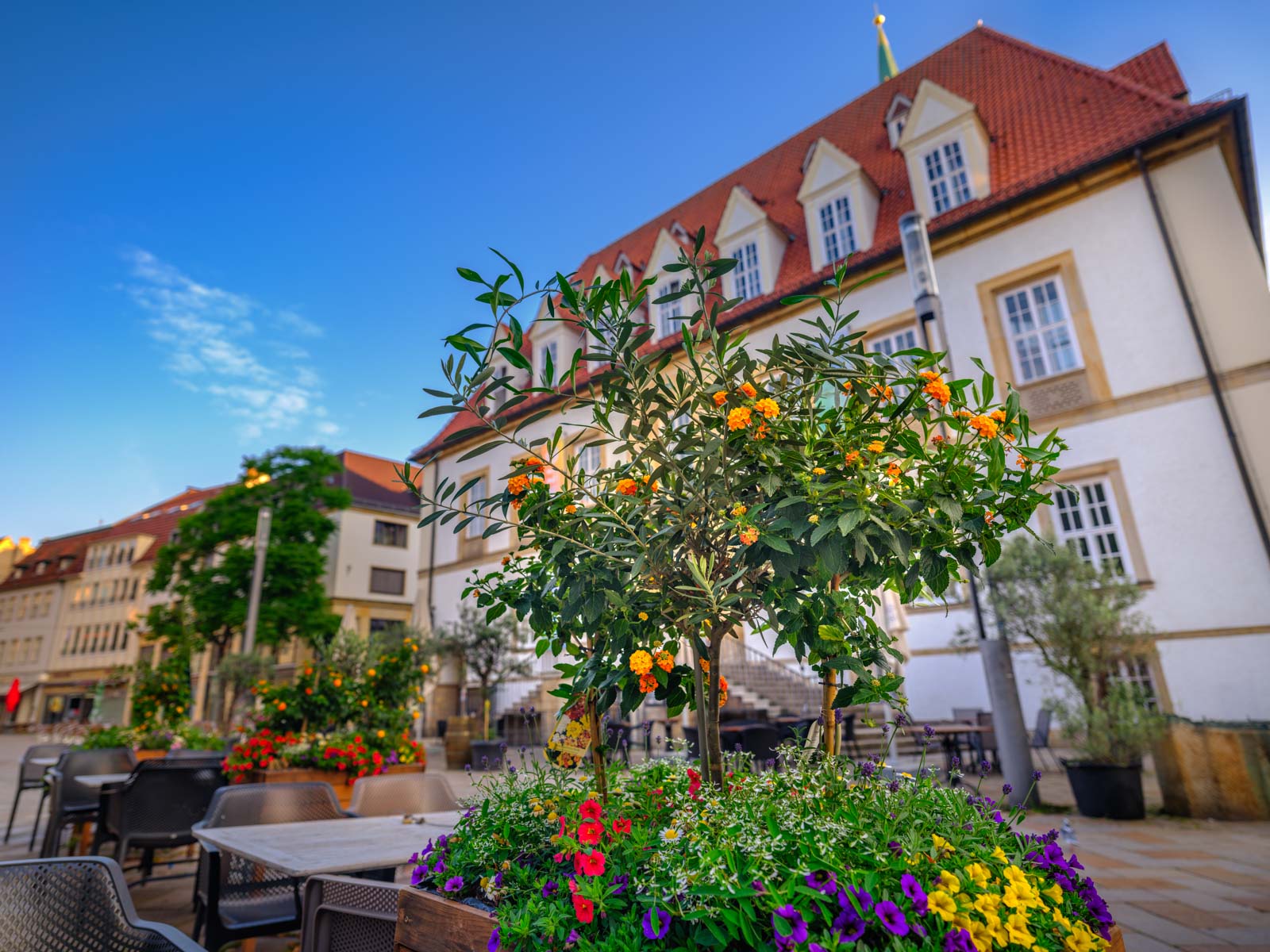
Flowers at the Waldhof
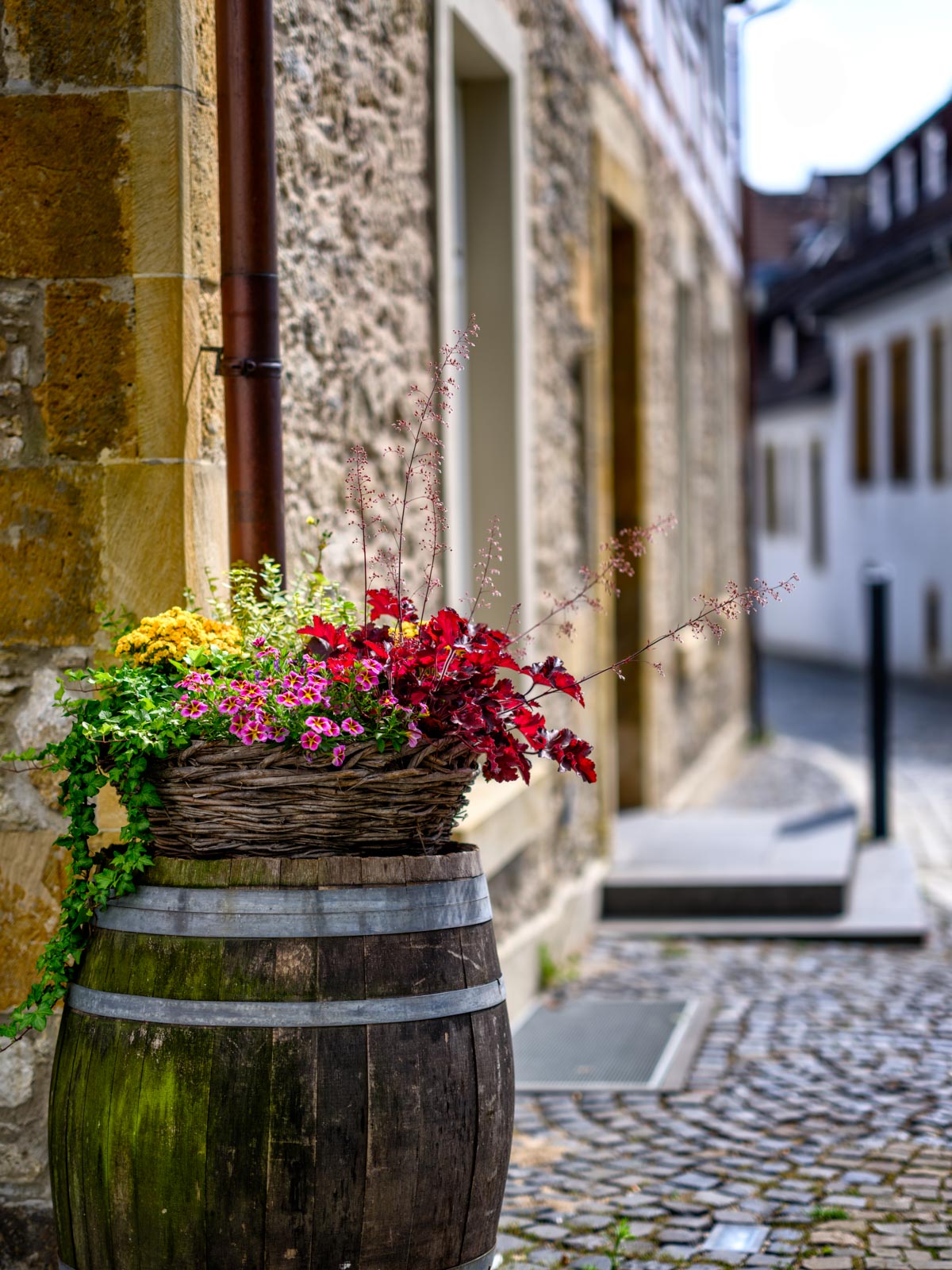
The Linen Weavers' Monument
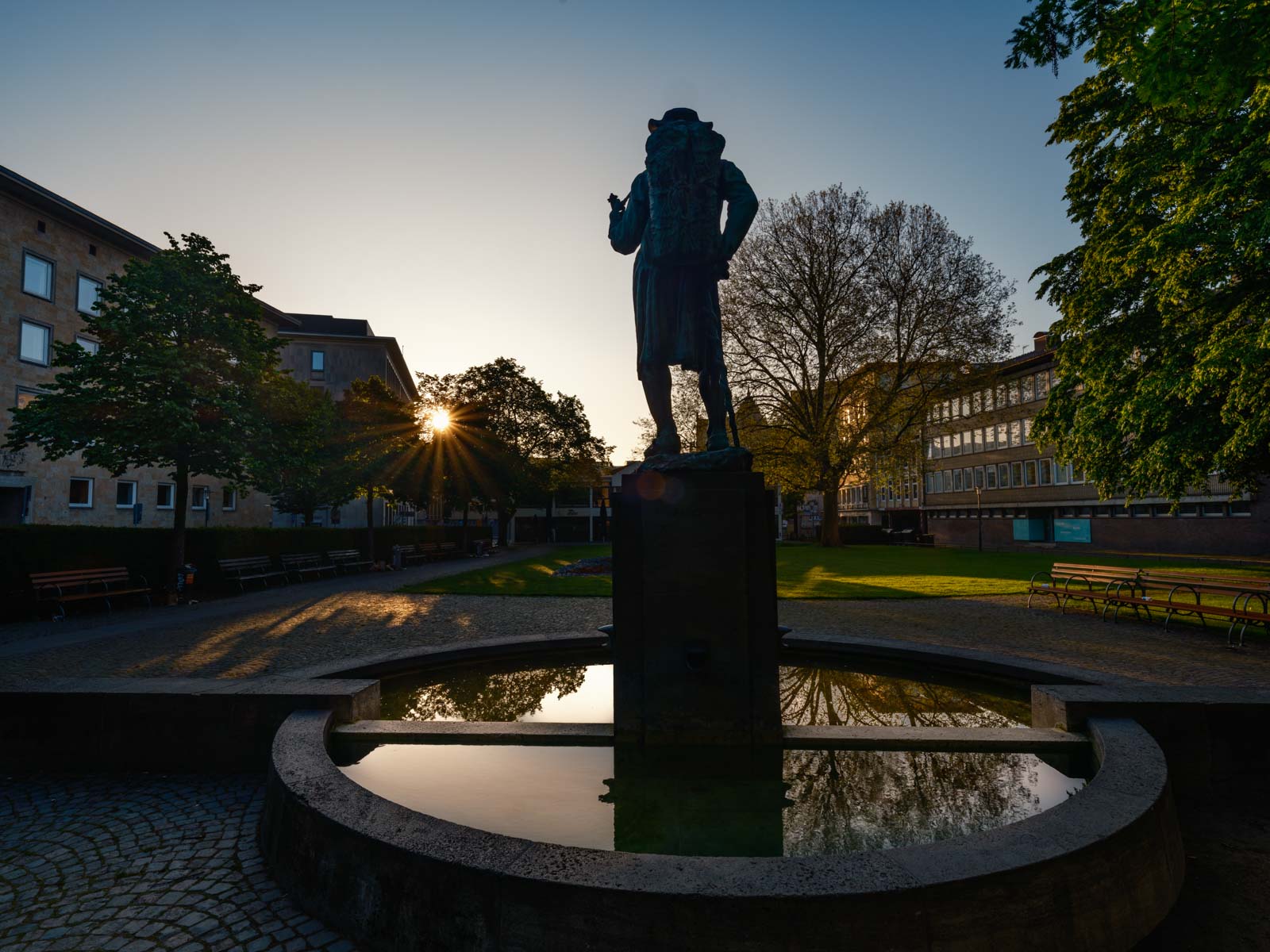
Tram on the Kreuzstraße
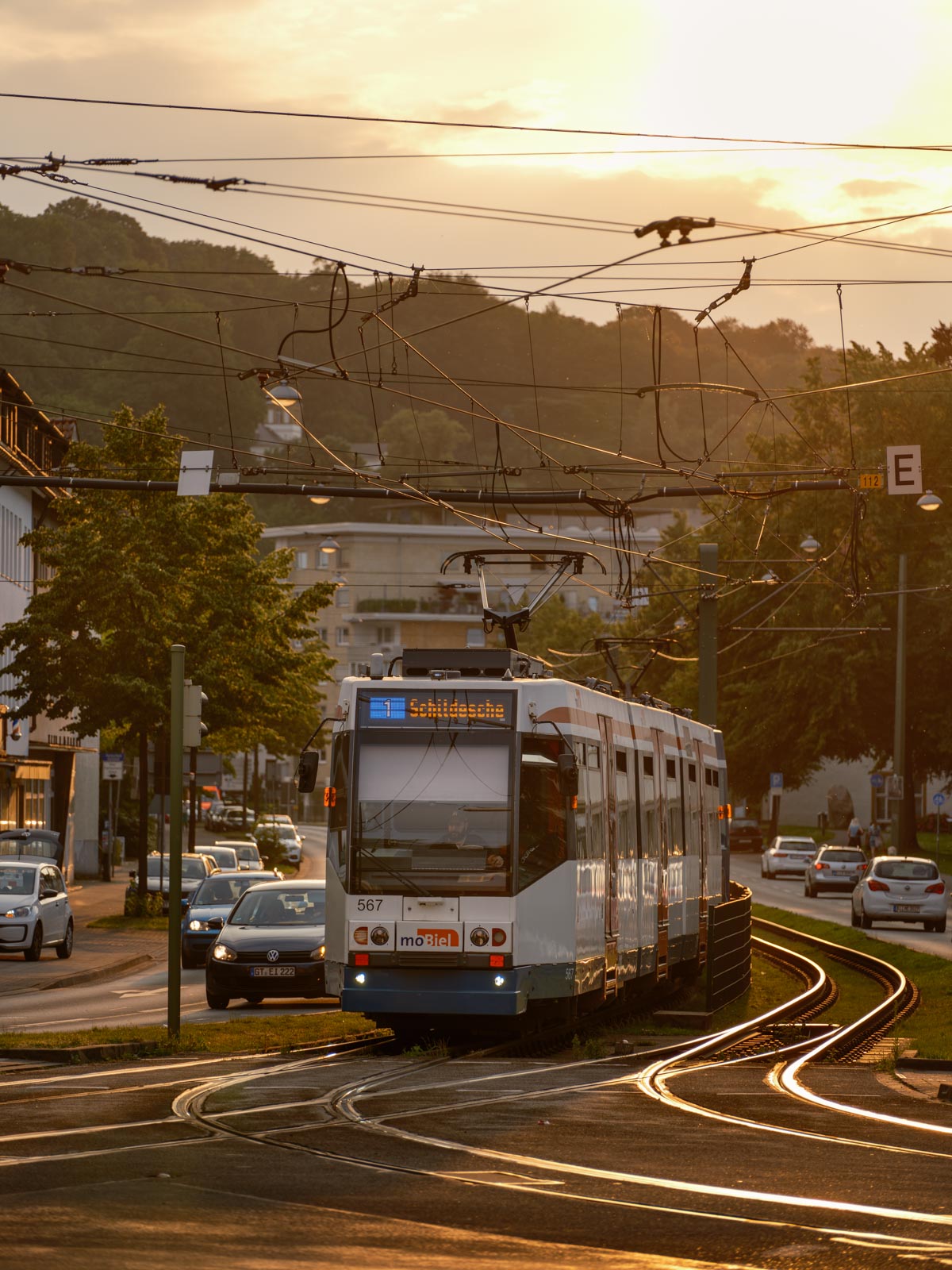
KONTOR building at sunset
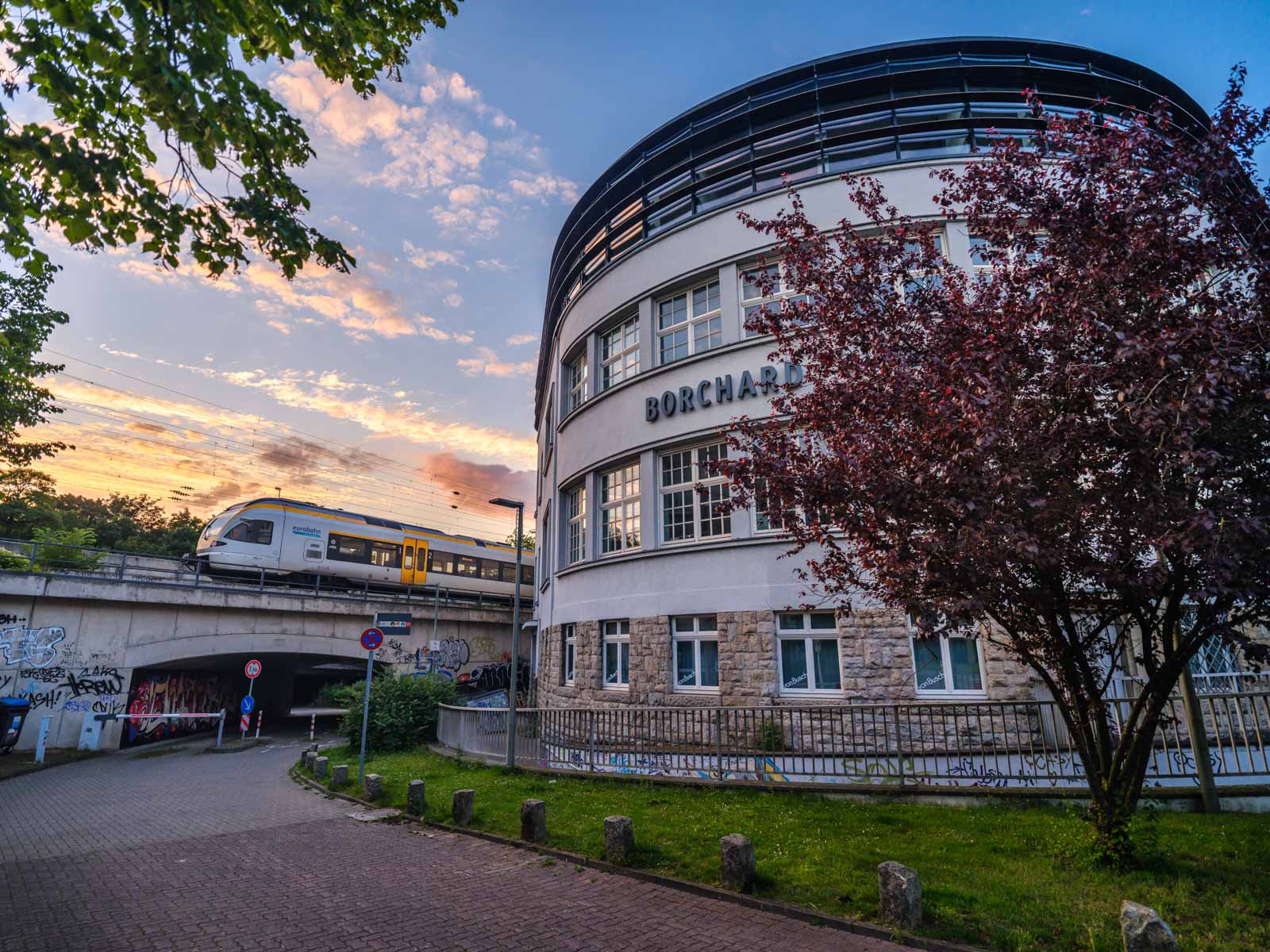
Evening clouds over downtown Bielefeld
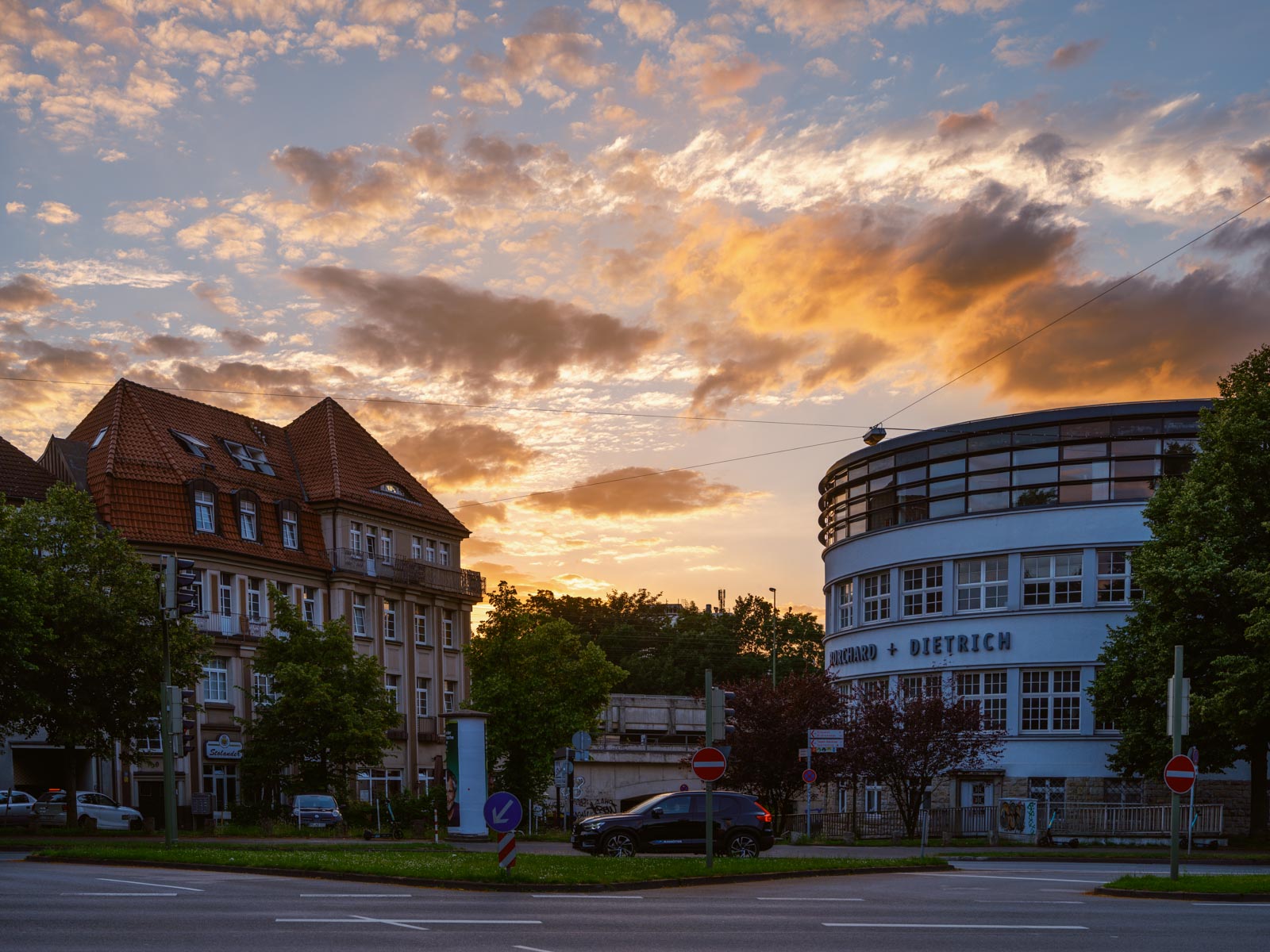
Cyclists in the city center at the Nikolai Church
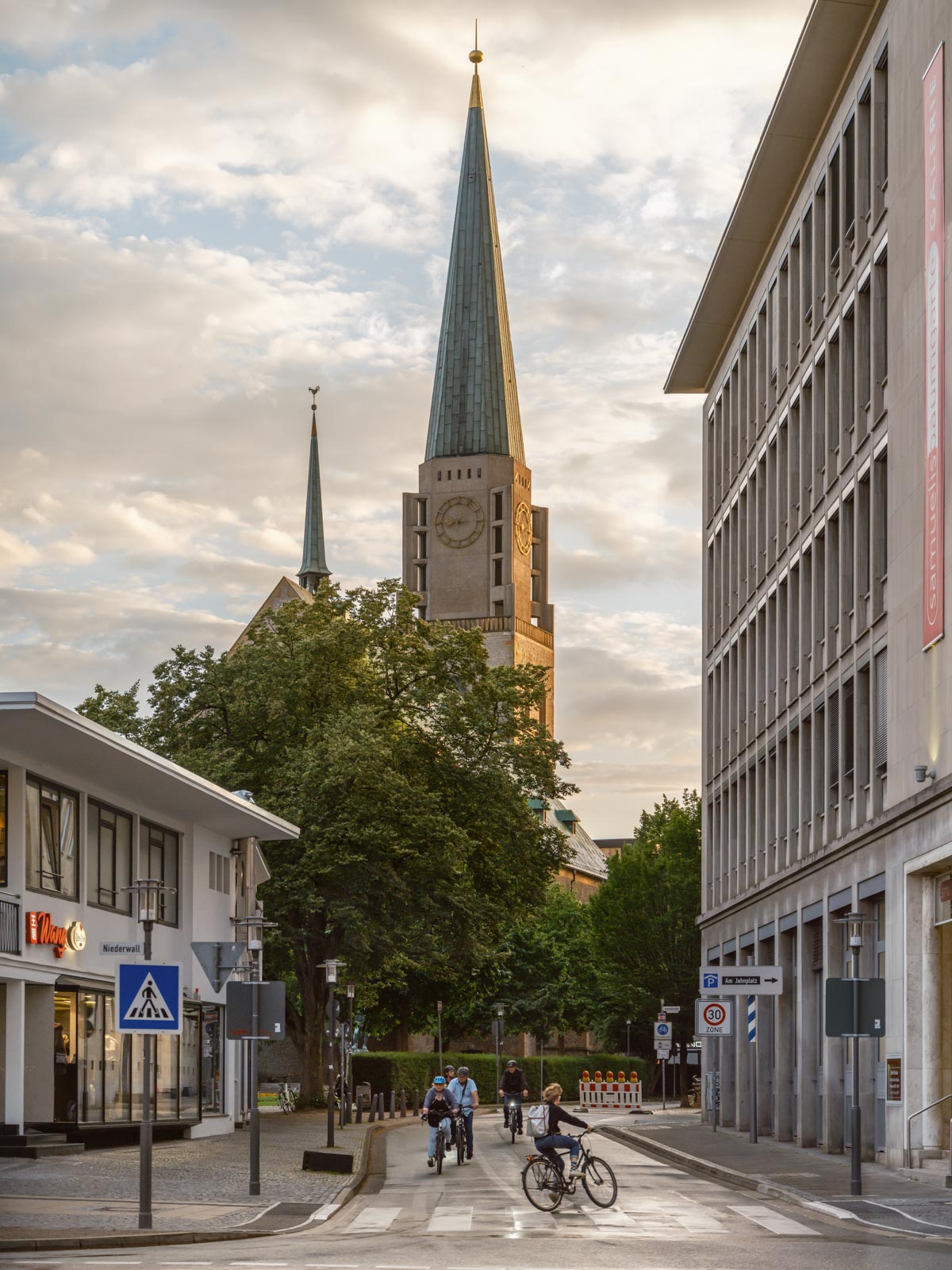
Shop window reflections at Ritterstraße
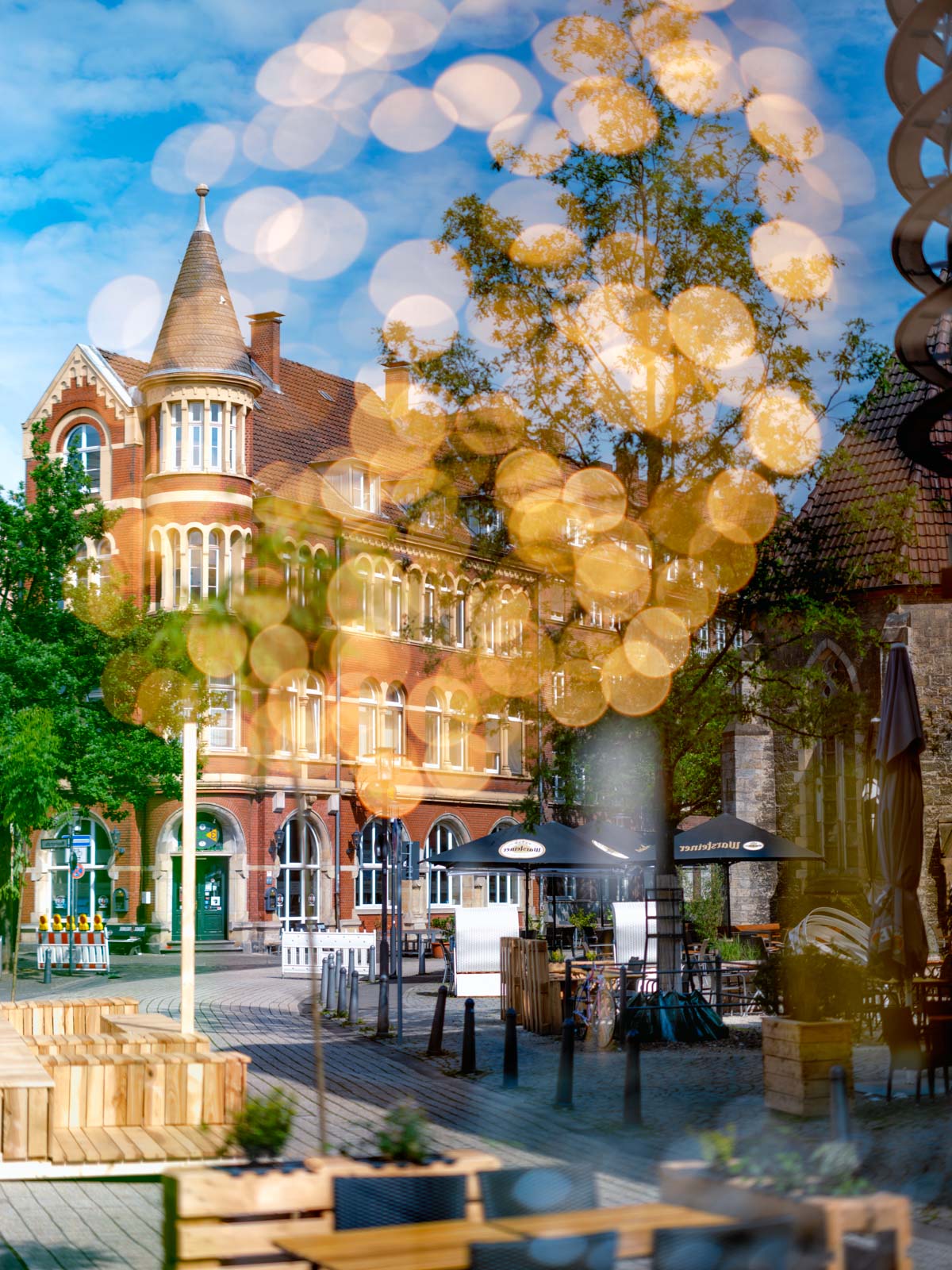
Car in the backlight on Oldentruper Straße
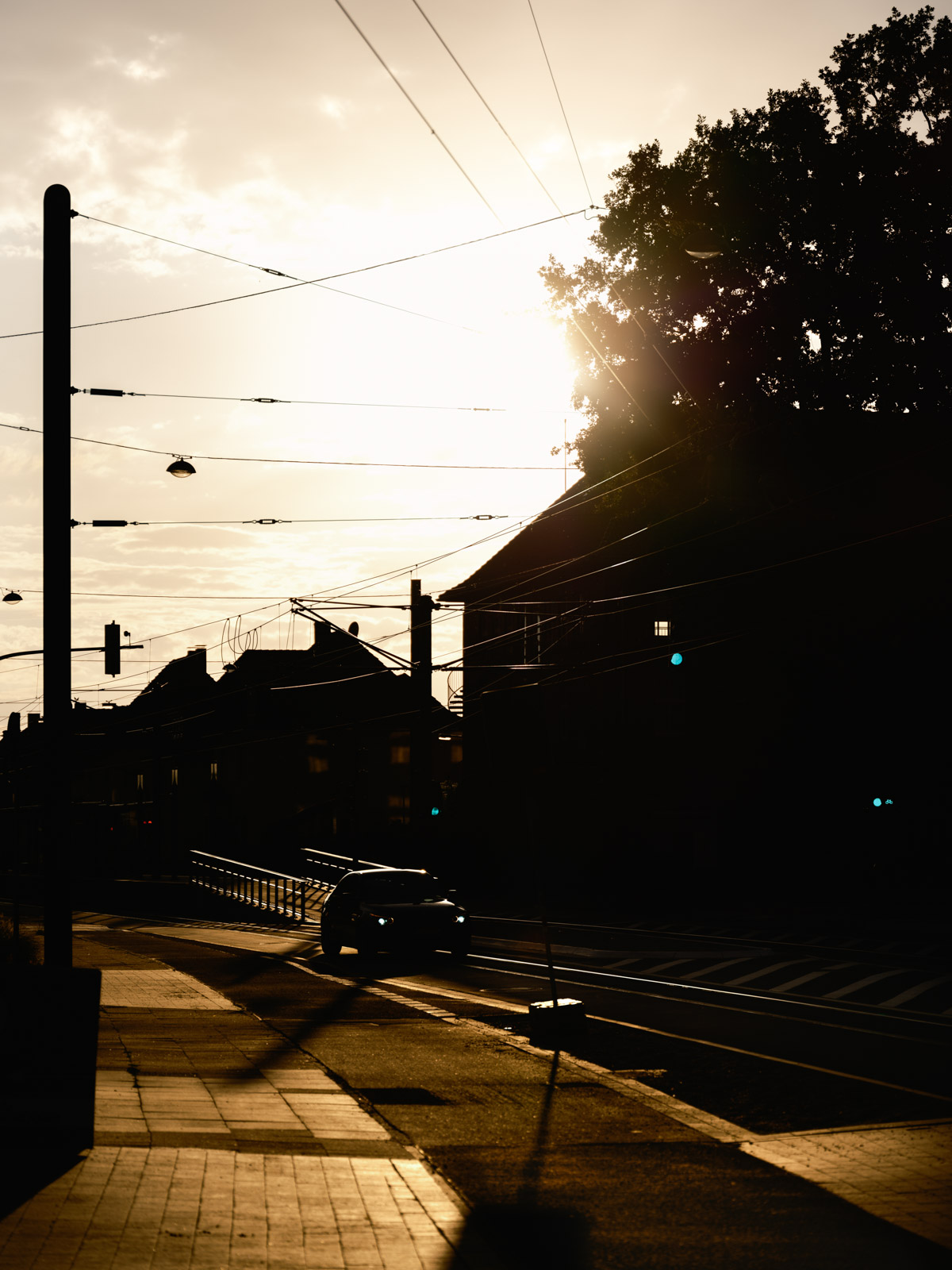
07/05/2021
In times of the COVID-19 pandemic, things looked anything but good for cultural events. No theater, no cinema, no live music and no festivals and that for over a year.
Now that the infection numbers are decreasing and more and more people have their Corona vaccination, the situation is slowly improving. And culture is also coming back.
In early summer, shortly before the start of the semester break, a music festival is held on the campus of Bielefeld University. Although that was not possible this year, the organizers were at least able to move to a park. Under strict Corona conditions there would be bands and live music again. The weather was not so nice but the main thing is that things are back to normal.
The event on July 1, 2021 was sponsored by the Sparkasse Bielefeld and I had the assignment to take some photos. The bands at the 'This is not a Campus Festival' were Pillow Dog, Provinz and Leoniden.
This is not a Campus Festival: Pillow Dog
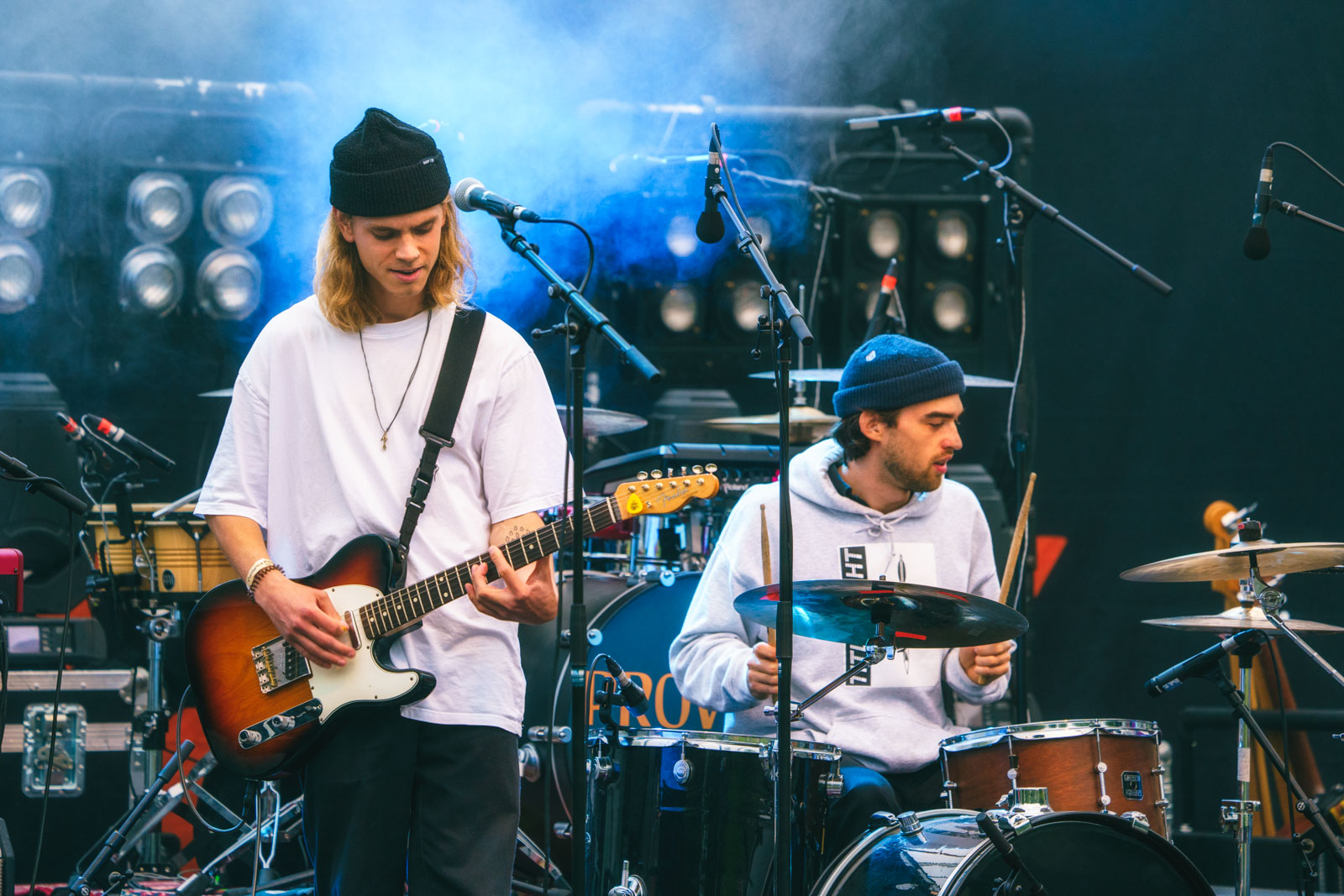
This is not a Campus Festival: Provinz
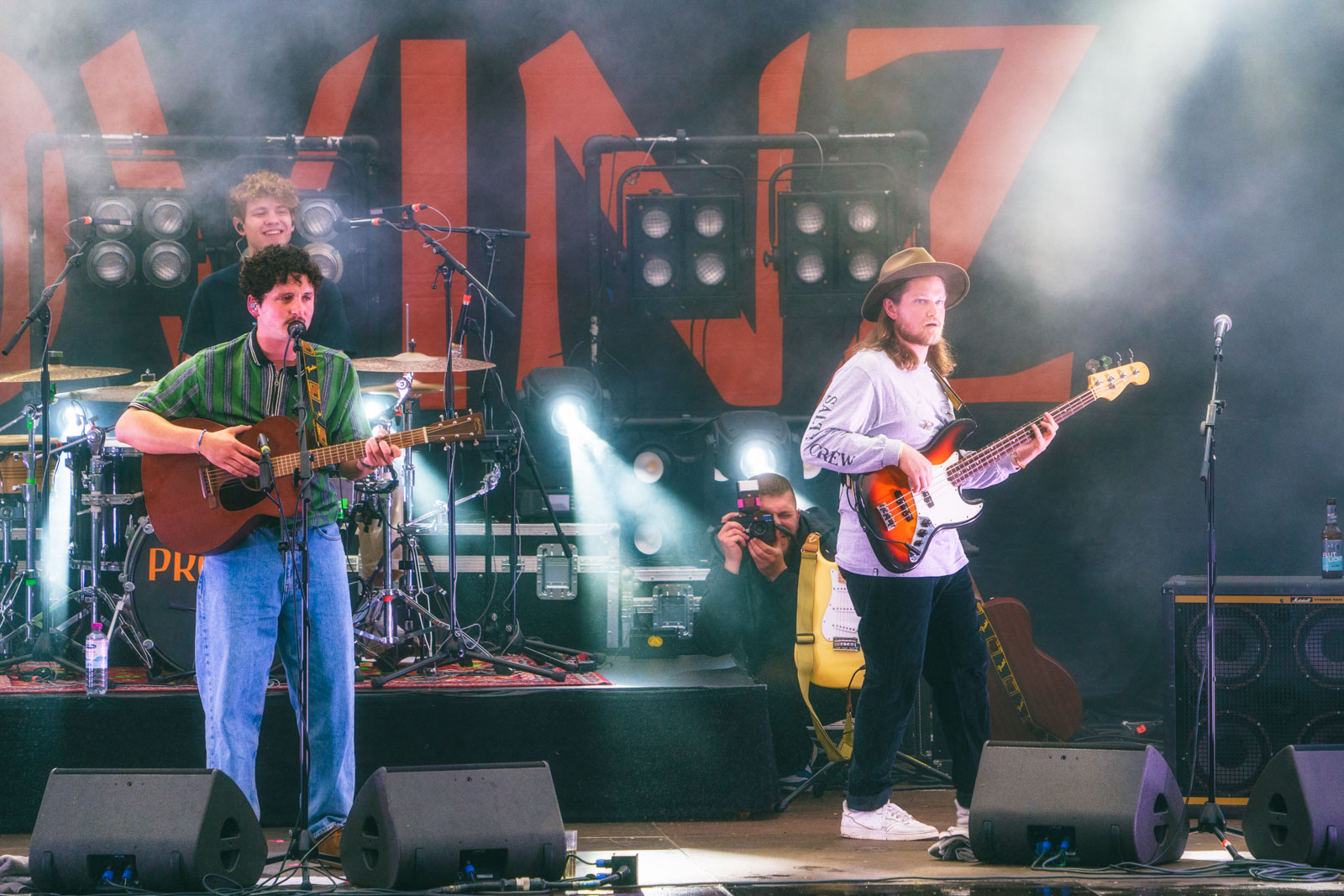
This is not a Campus Festival: Leoniden
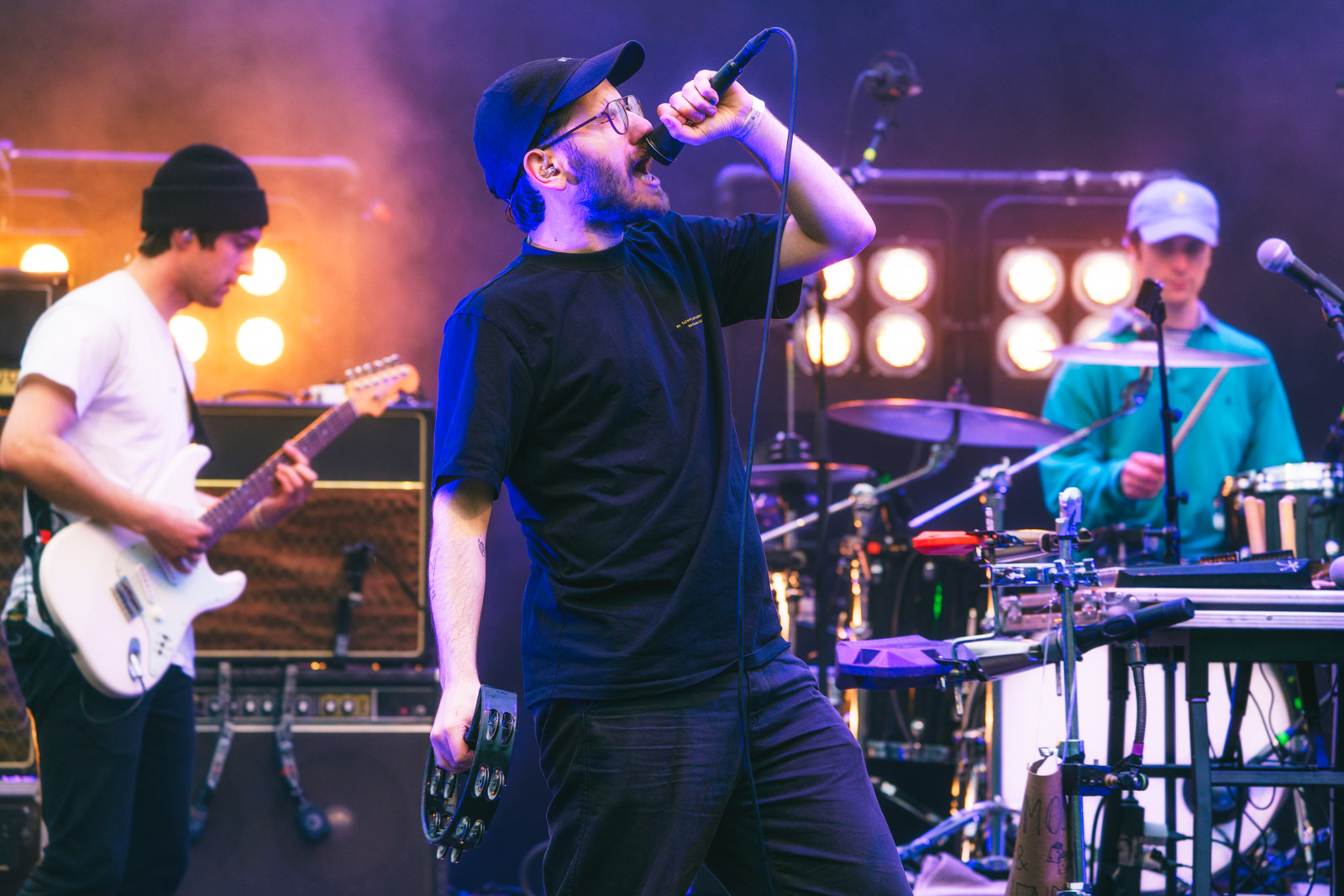
07/03/2021
Even though the Teutoburg Forest may look natural at first glance, it is not. That is the case for most forests in Central Europe. Beginning with the rapid population growth from the Middle Ages and early modern times, more and more areas have been cleared and cultivated. By the 18th century, large areas of the Teutoburg Forest had been cleared and the ridges were bare. It was not until the 19th century that reforestation began, but with the goal of economic timber extraction. Instead of the original mixed deciduous forests, large areas were planted with spruce. Simply because these trees grow quickly and provide a lot of wood in a short time. This also went well for quite some time. For some years, however, more and more problems have come to light. Precipitation has decreased significantly and summers are becoming increasingly warmer. It is suspected that these are already consequences of climate change. The spruce forests cannot cope with the high level of drought. They are dying and pests such as the bark beetle have an easy time of it. Meanwhile, there are many areas in the Teutoburg Forest that are massively affected by this problem. It is actually impossible to overlook it.
Trees in the fog #1
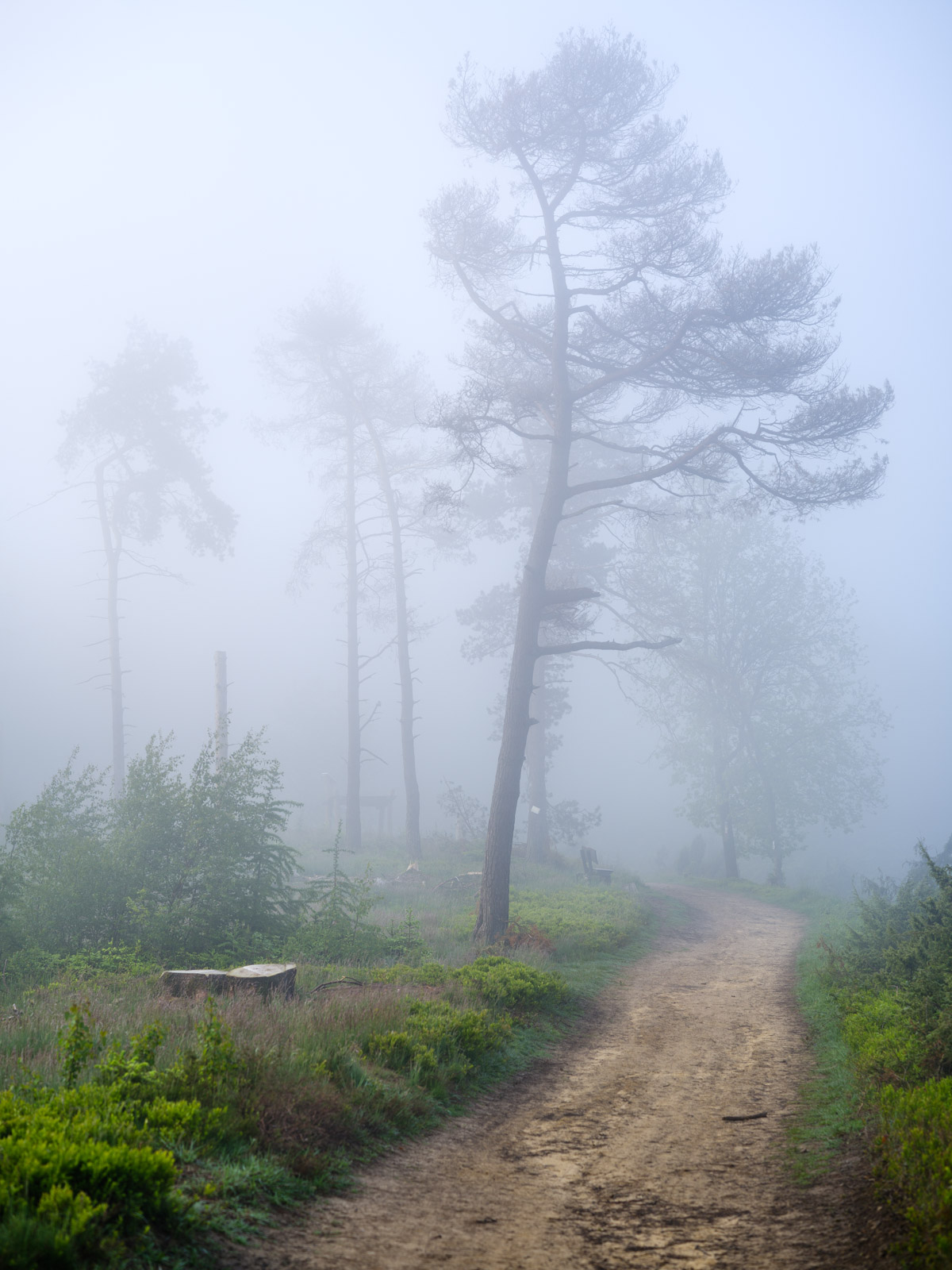
Trees in the fog #2
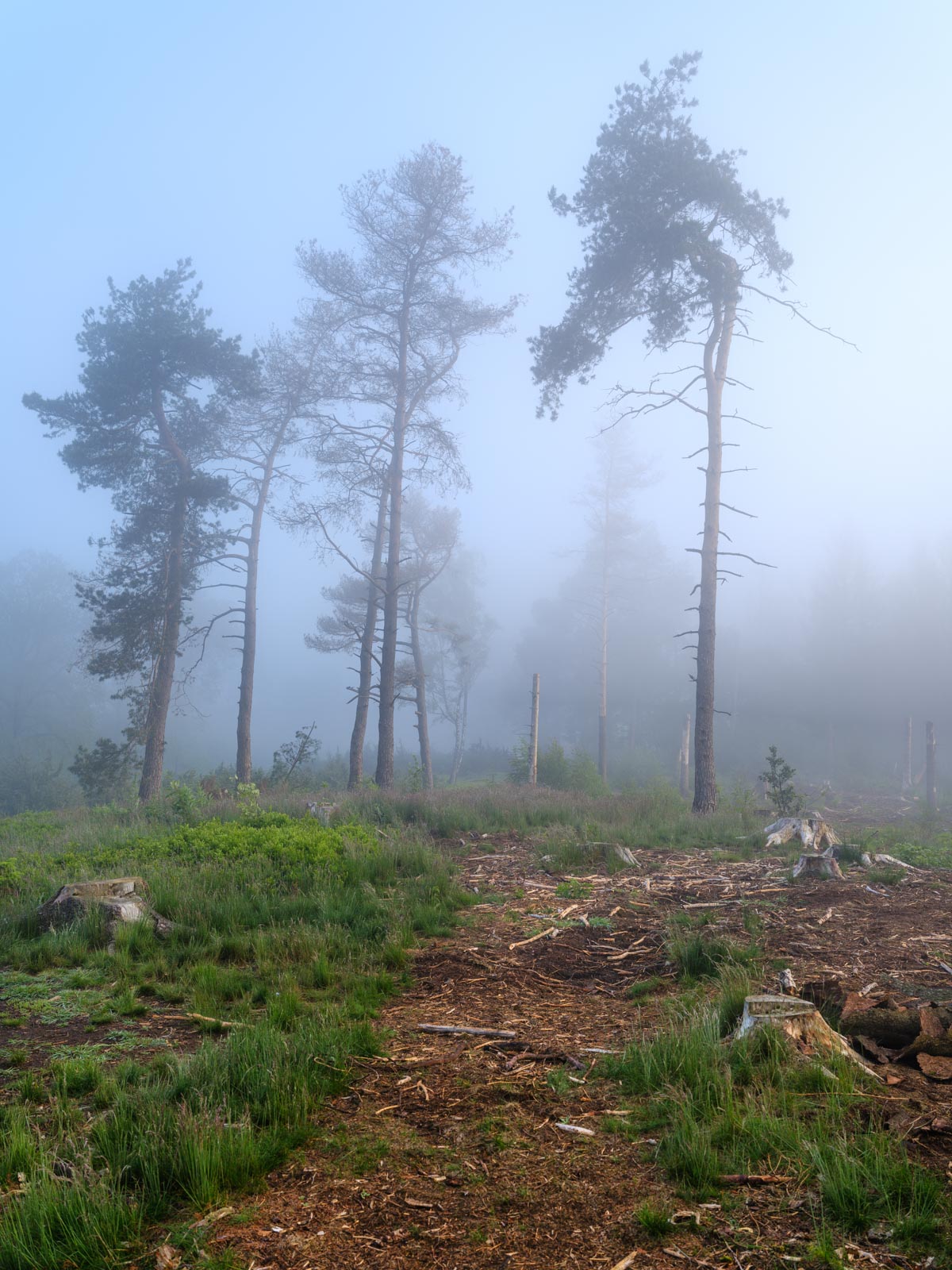
Trees in the fog #3
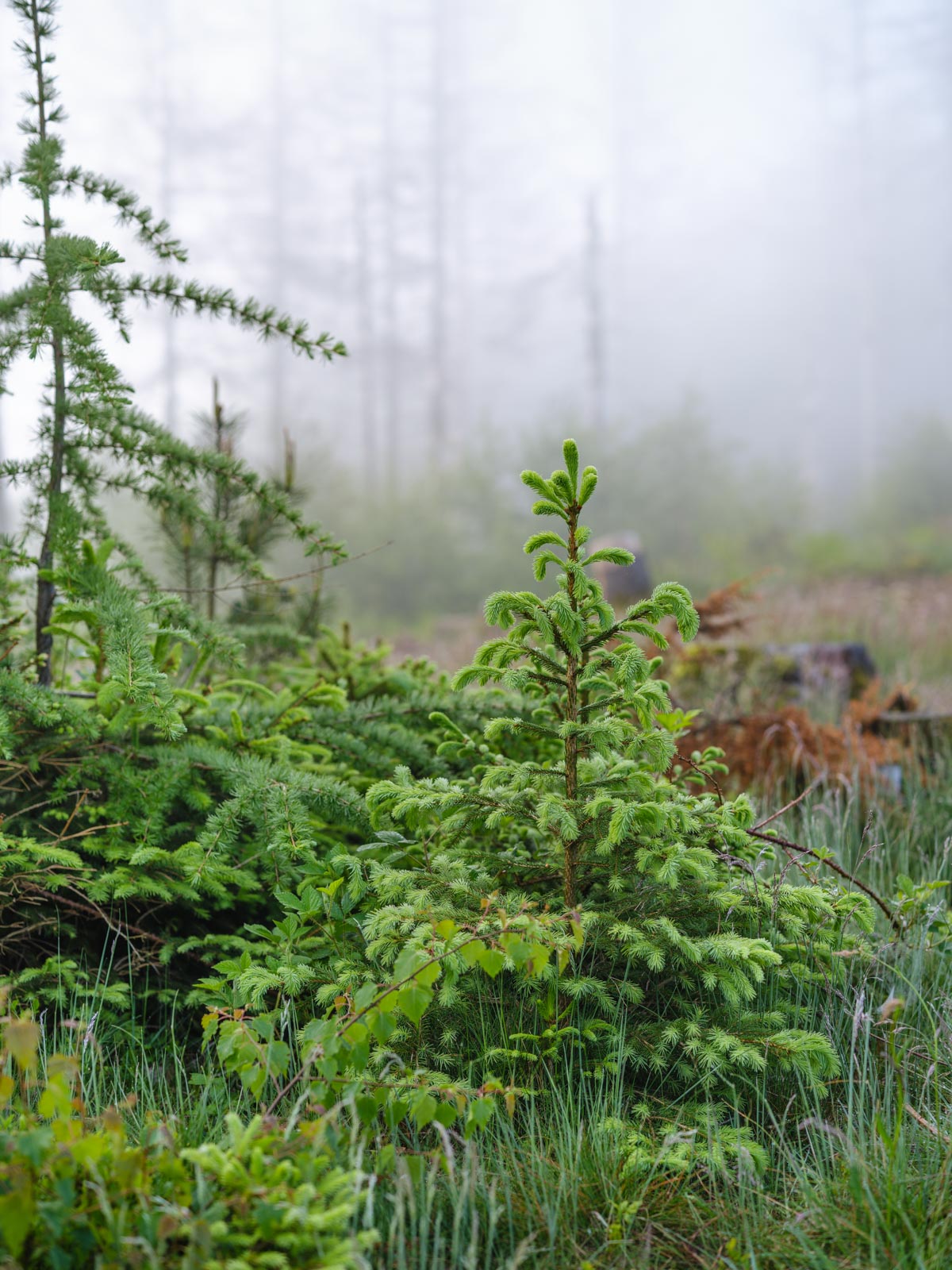
Dead spruce trees #1
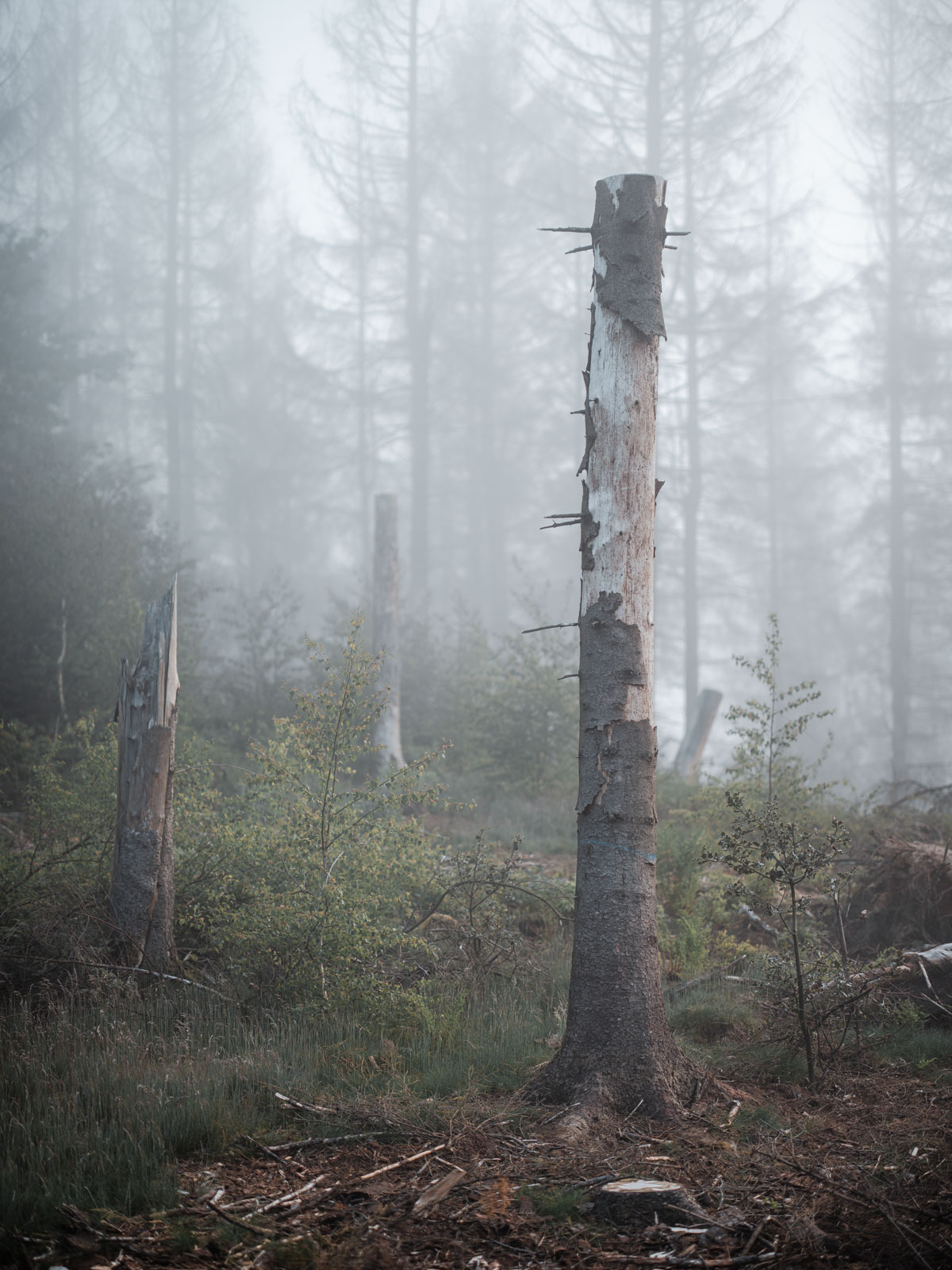
Dead spruce trees #2
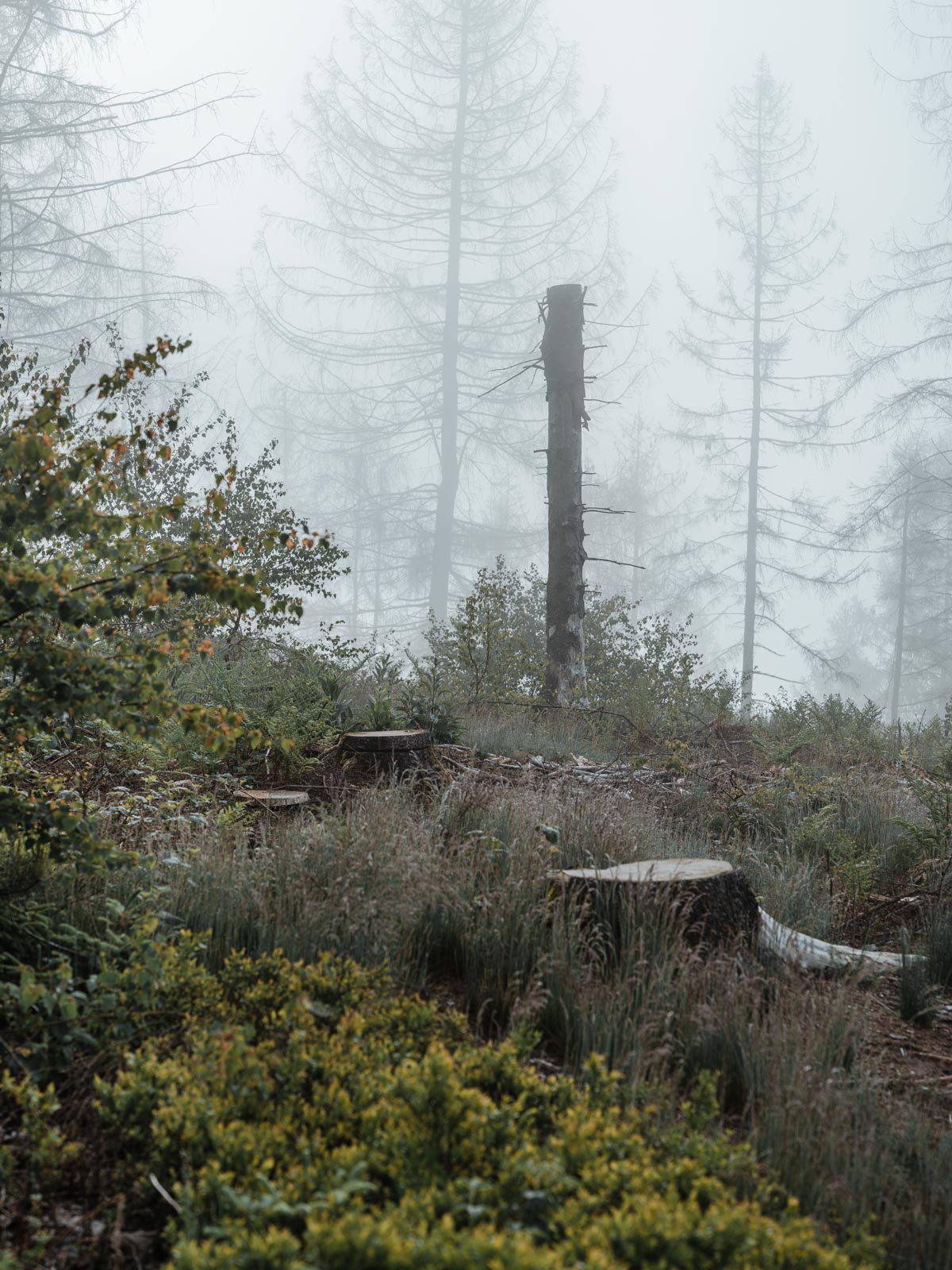
Trees in the fog #4
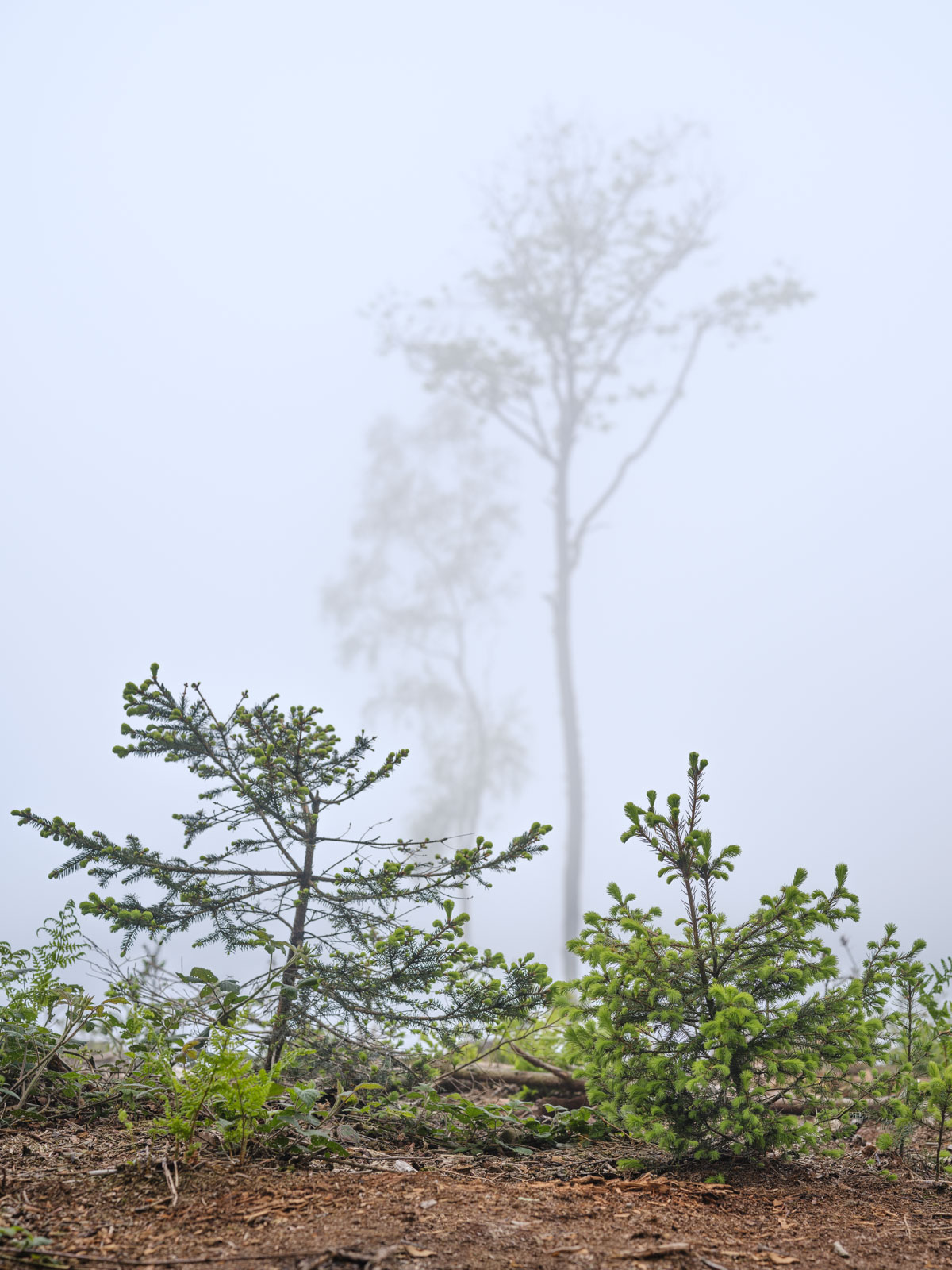
Trees in the fog #5
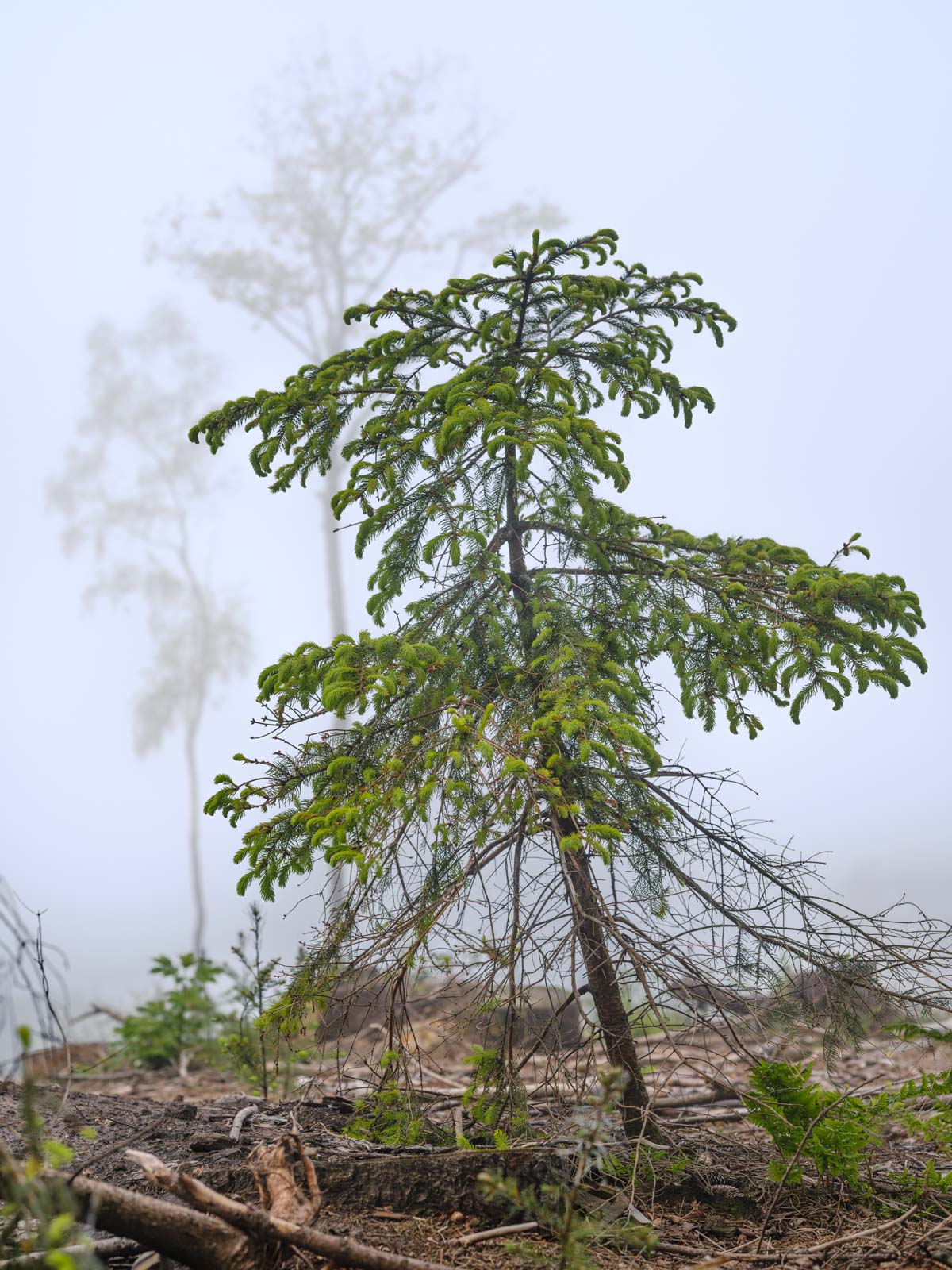
> Nature
06/12/2021
Last week I was on the Velmerstot. The Velmerstot is a mountain - actually a high low mountain range hill - in the Teutoburg Forest or in the Egge Hills. The highest point is about 464 meters above sea level. The Velmerstot lies half in the district of Lippe and the other half in the district of Paderborn. It is a very beautiful viewpoint and you can hike from the small village of Leopoldstal to the top in one or two hours. The Velmerstot has two peaks. The Prussian Velmerstot (464 meters) and a little further north the Lippian Velmerstot, which is slightly lower at 441 meters.
I was there last Thursday and already started from Leopoldstal shortly after seven in the morning. Nobody was on the way except me, although the weather was really nice.
There used to be a NATO base for air defense on top of the summit. But that has been history for 25 years. Today you can walk on the whole summit area and the landscape has been renaturalized.
Lippischer Velmerstot (Lippian Velmerstot)
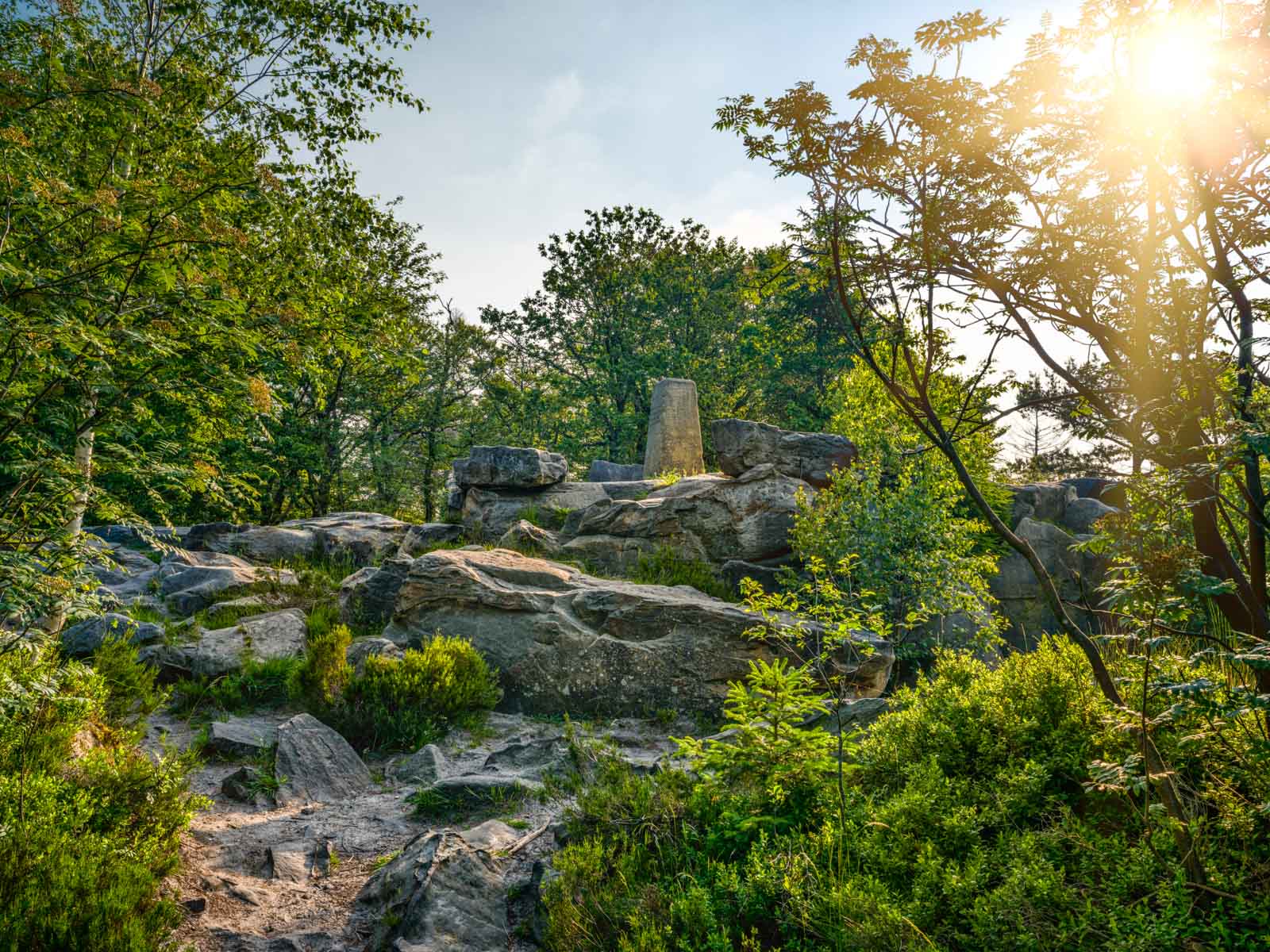
Old quarry under the Velmerstot summit #1
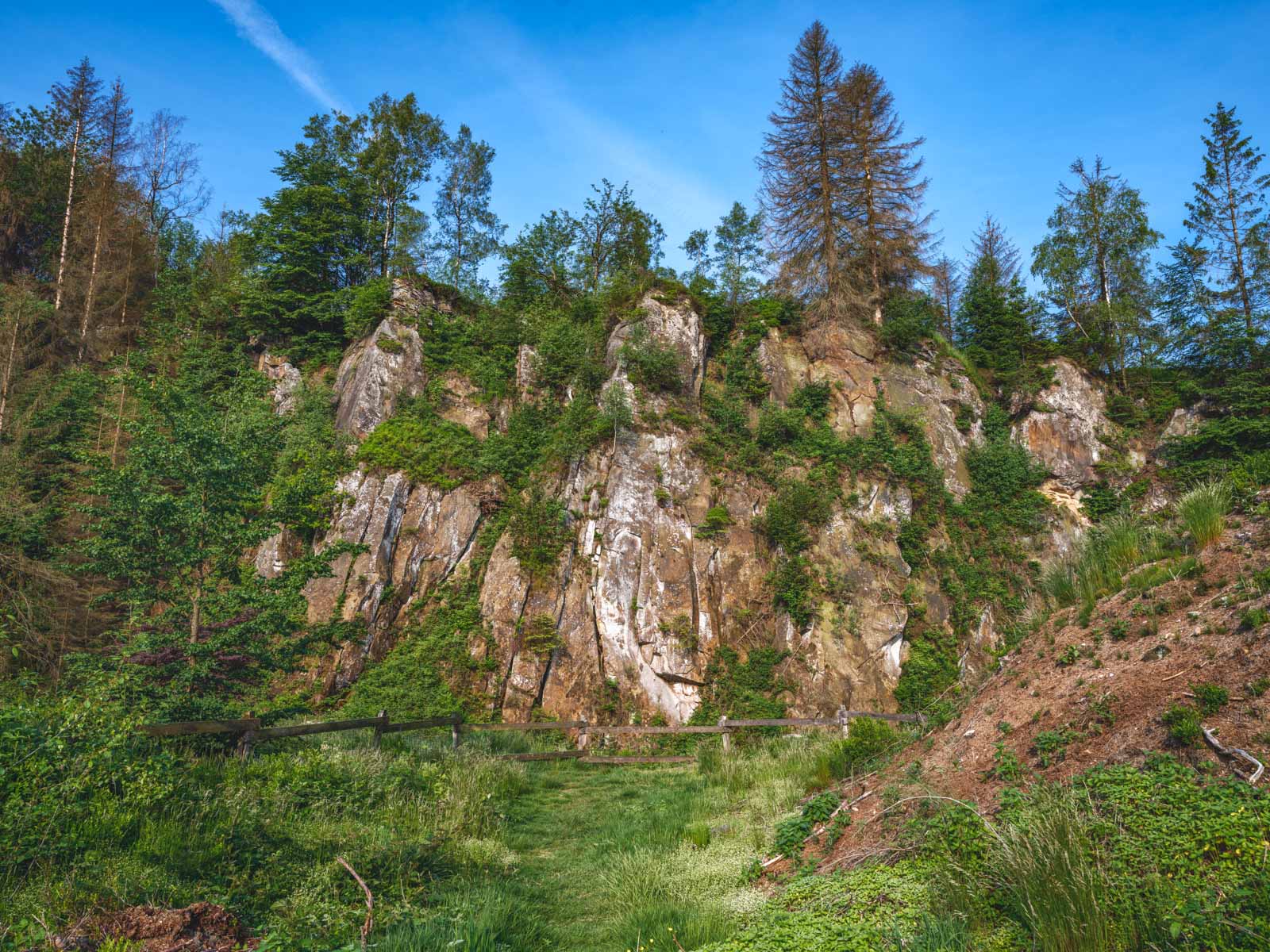
Old quarry under the Velmerstot summit #2
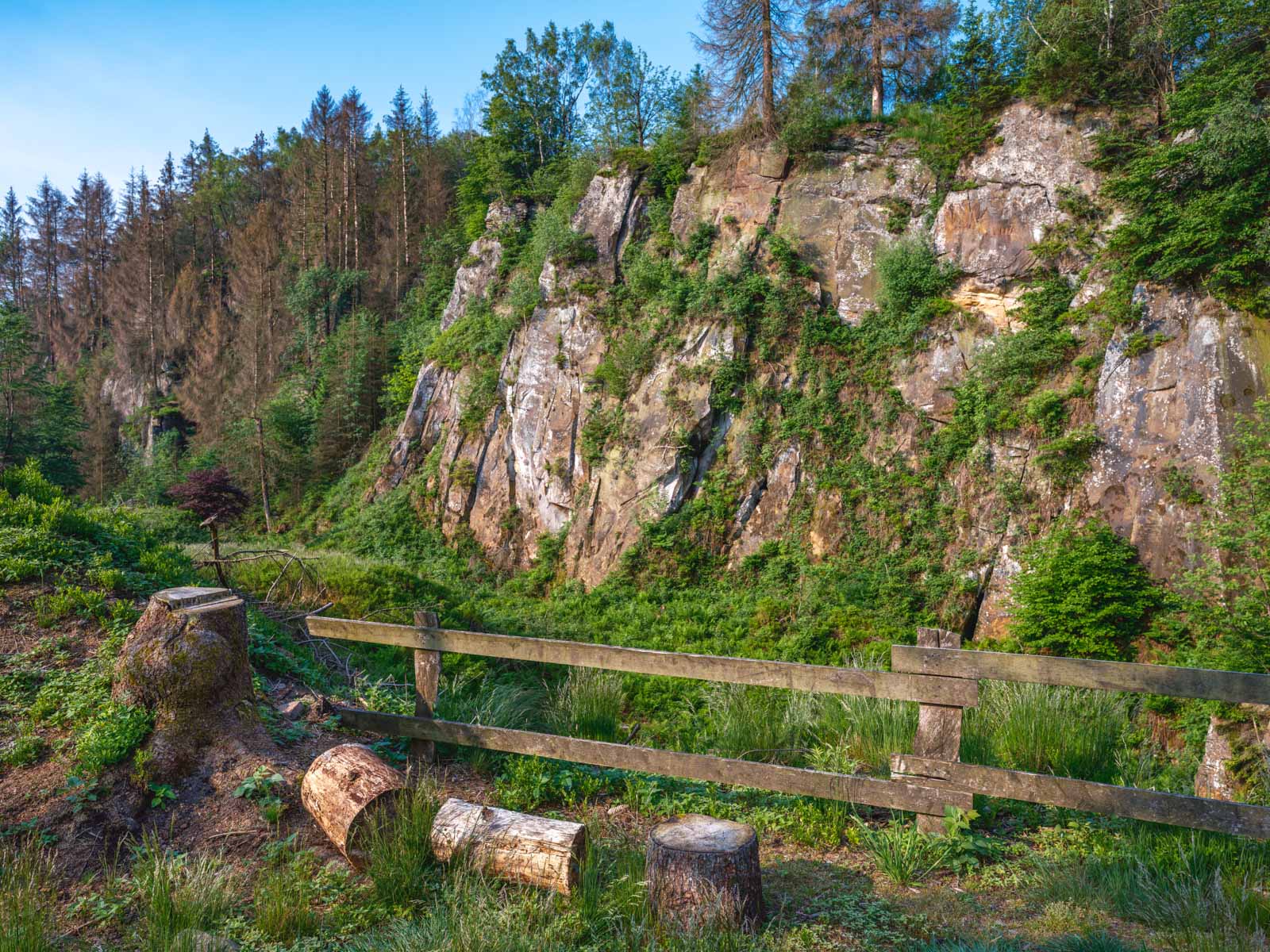
Rock below the Velmerstot summit
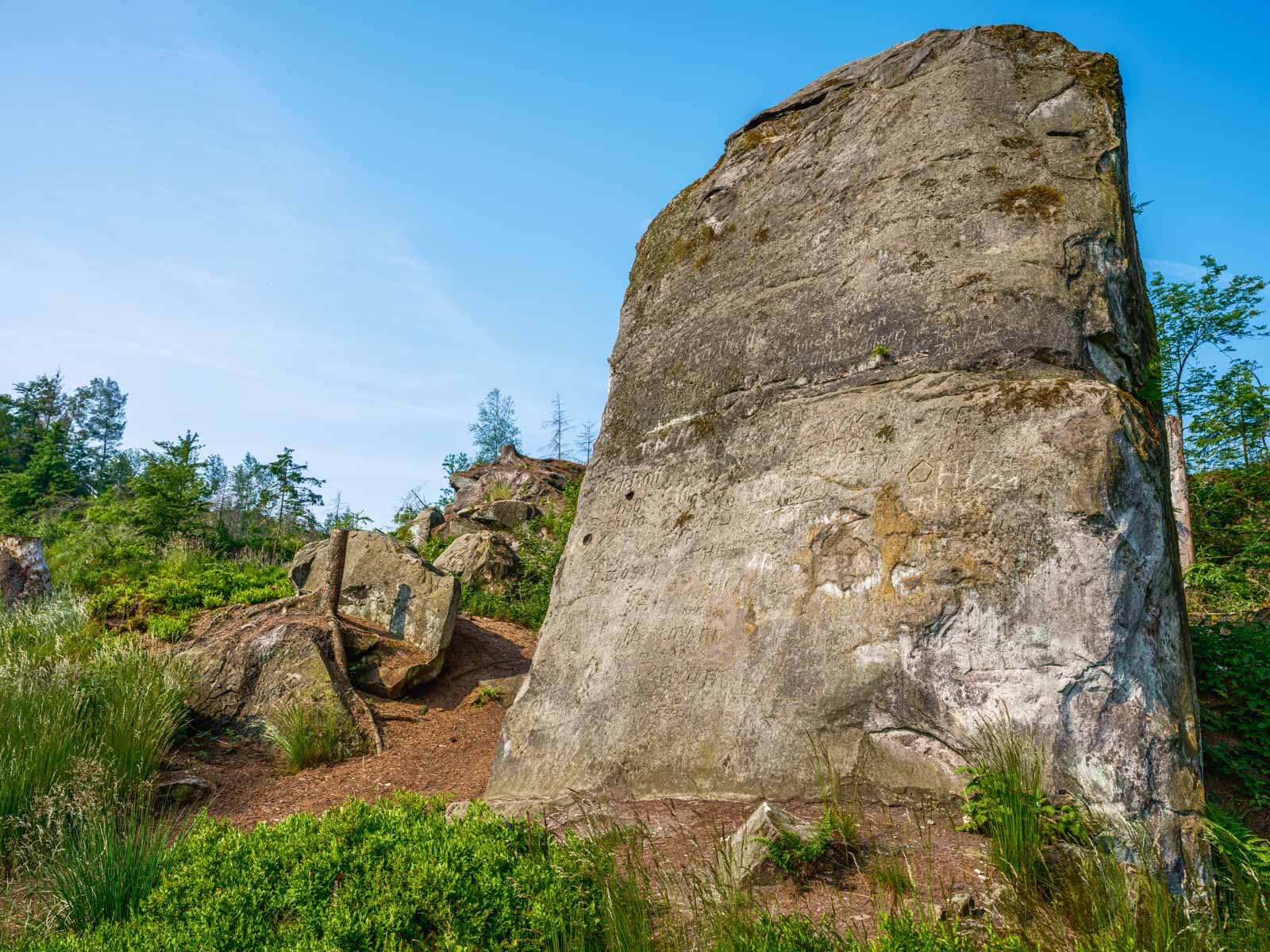
European columbine at the Velmerstot summit
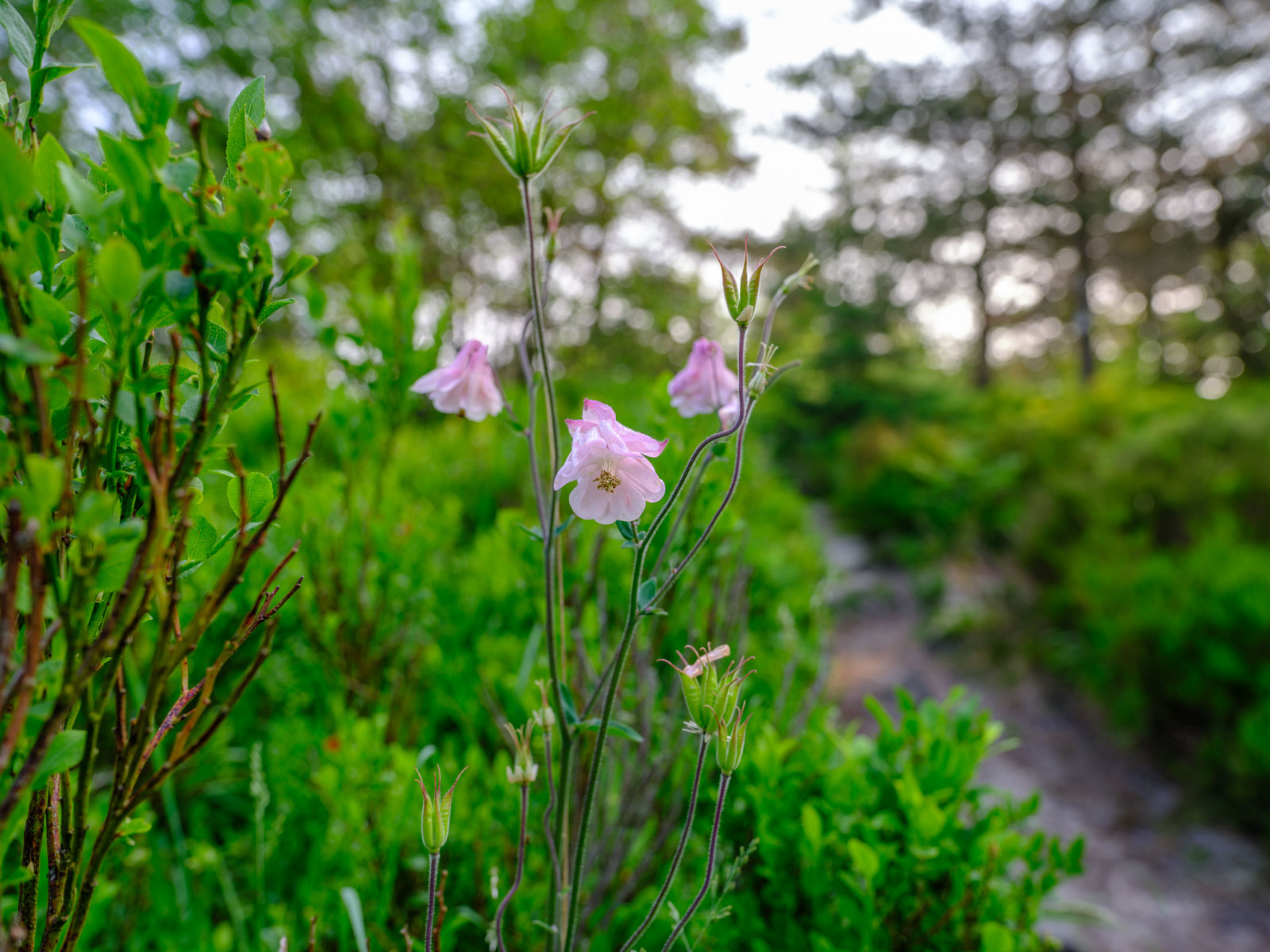
> Nature

